From almonds to peanuts and pecans to walnuts, we’re covering 59 types of nuts, from A to Z in this comprehensive guide to all different kinds of nuts!
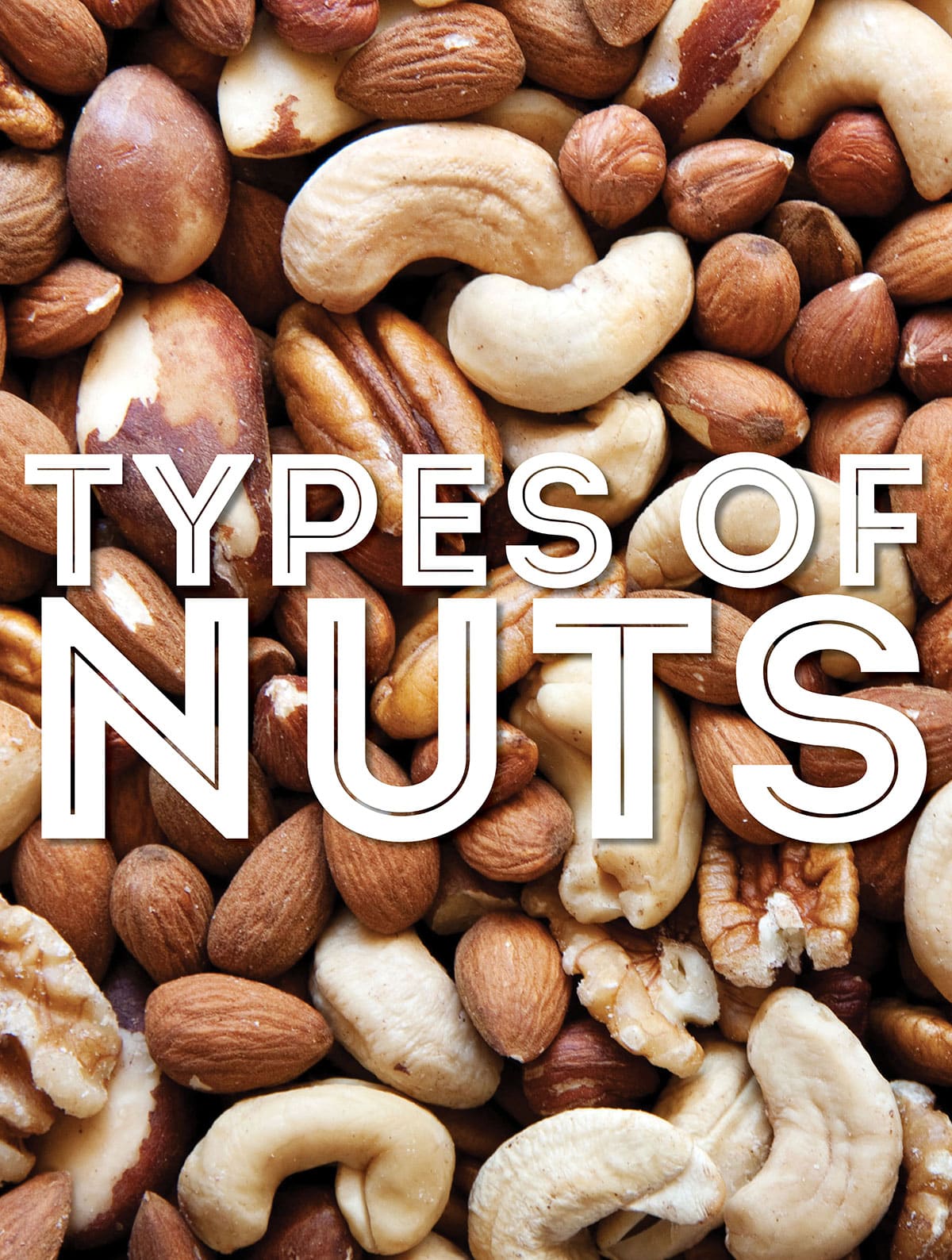
Even though peanuts are one of the most common nuts eaten (did you know they aren’t even a nut?!), there are so many more varieties to enjoy, so let’s dive into all different types of nuts!
What is a Nut?
According to the U.S. Forestry Service, nuts are defined as a “dry single-seeded fruit that has a high oil content. They are usually enclosed in a leathery or solid outer layer.“ Botanists define nuts as a composite of seed and dry fruit found inside of a hard outer shell.
Culinarily what we accept as nuts is a bit more broad. Peanuts, for example, have more than one seed and technically are the seed of a legume. So they aren’t actually nuts, but we use them like they are. In addition to peanuts, we will take a look at 59 different kinds of nuts from A to Z!
Nutty Trivia
Ancient Greeks believed that hazelnuts had the ability to cure a specific malady that still doesn’t have a cure today. Can you name it? (find the answer at the end of this post!)
Different Types of Nuts
Let’s dive into 59 different types of nuts! We will cover everything from the common peanut to the more unique like monkey puzzle nuts. We’ve listed them all the way from A to Z!
- Acorns
- Almonds
- Andean Walnuts
- Argan Nuts
- Baru Nuts
- Beech Nuts
- Betel Nuts
- Bitter Almond
- Black Walnuts
- Blanco Almond
- Brazil Nuts
- Breadnut
- Bunya Nut
- Butternuts
- Canarium Nut
- Candle Nuts
- Caramel Almond
- Cashews
- Chestnuts
- Chilean Hazelnut
- Chinese Chestnut
- Dika Nuts
- English Walnut
- Filberts
- Fritz Almonds
- Gabon Nuts
- Ginkgo Nuts
- Green Almonds
- Hazelnuts (See Filberts Above)
- Hickory Nuts
- Jack Nuts
- Kola Nuts
- Kurrajong Nuts
- Lotus Nuts
- Macadamia Nuts
- Malabar Chestnut
- Marcona Almond
- Mission Almond
- Mongongo Nuts
- Monkey Puzzle Nut
- Oysternut
- Padre Almond
- Palm Nuts
- Paradise Nut
- Peanuts
- Pecans
- Peerless Almond
- Pignoli Nuts
- Pili Nut
- Pine Nuts
- Pistachios
- Red Bopple Nut
- Runner Peanut
- Saba Nuts
- Spanish Peanut
- Tiger Nuts
- Valencia Peanut
- Virginia Peanut
- Water Caltrop
Acorns

Acorns are the nuts produced by oak trees, which are native to various regions around the world. These small nuts (1-2 centimeters in length) are not commonly used as food for humans but they are used in some indigenous cultures after being processed to remove bitter tannins. Acorns can be ground into flour and used in baking or cooked to make a variety of traditional recipes.
Almonds
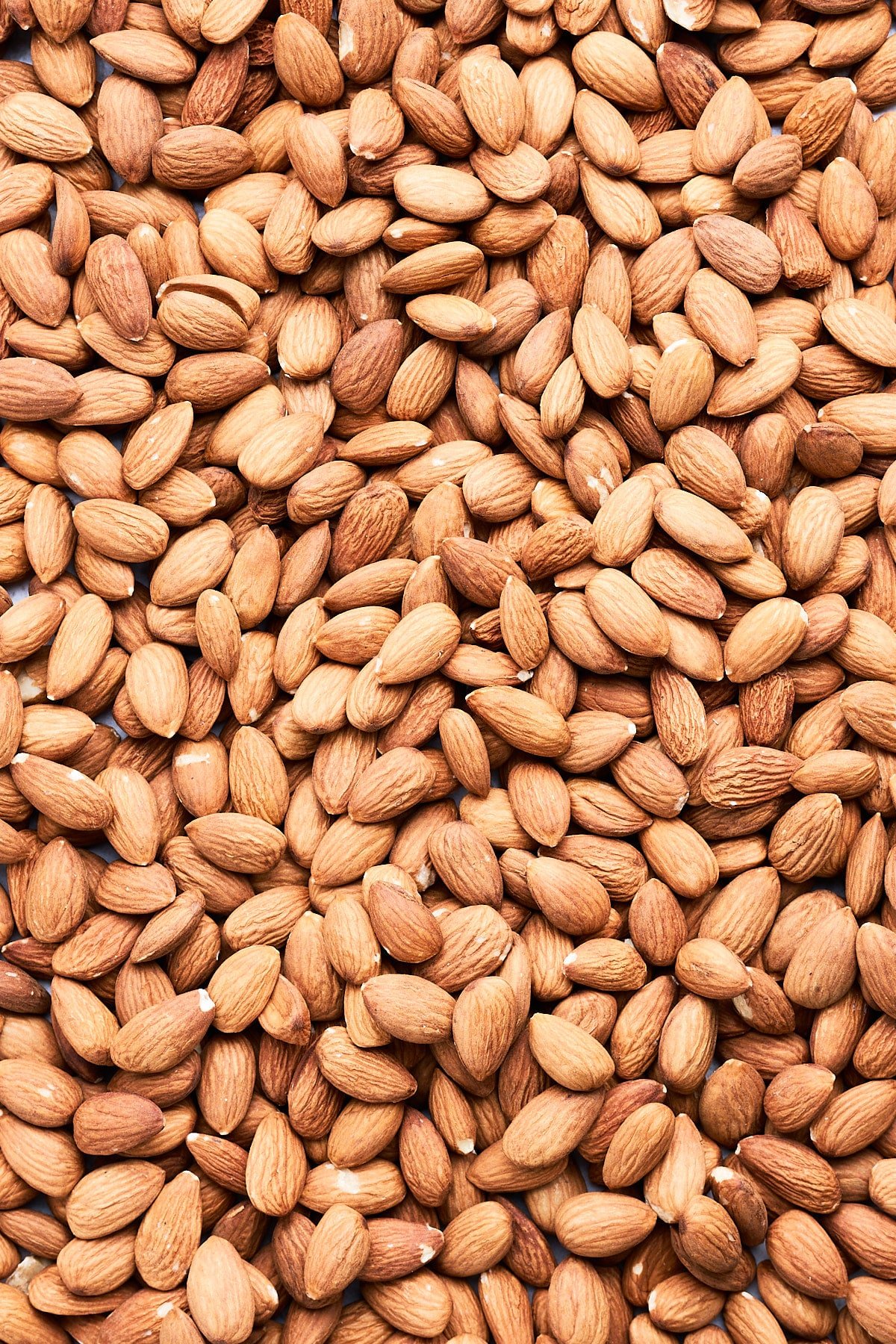
Almonds are native to the Middle East and Southern Asia, but are now grown in various regions around the world, and are important crops in California, Spain, and Australia. They are medium-sized nuts, with an oval shape and a length generally around 1.5 to 2 centimeters (though the size depends on the types of almond).
Almonds are widely used in both sweet and savory dishes. They can be eaten raw, roasted, or blanched. They are also used in baking, and cooking, as a topping for salads, or ground into almond butter or flour. They are also a popular ingredient in many desserts, such as marzipan, cookies, and almond milk.
Andean Walnuts
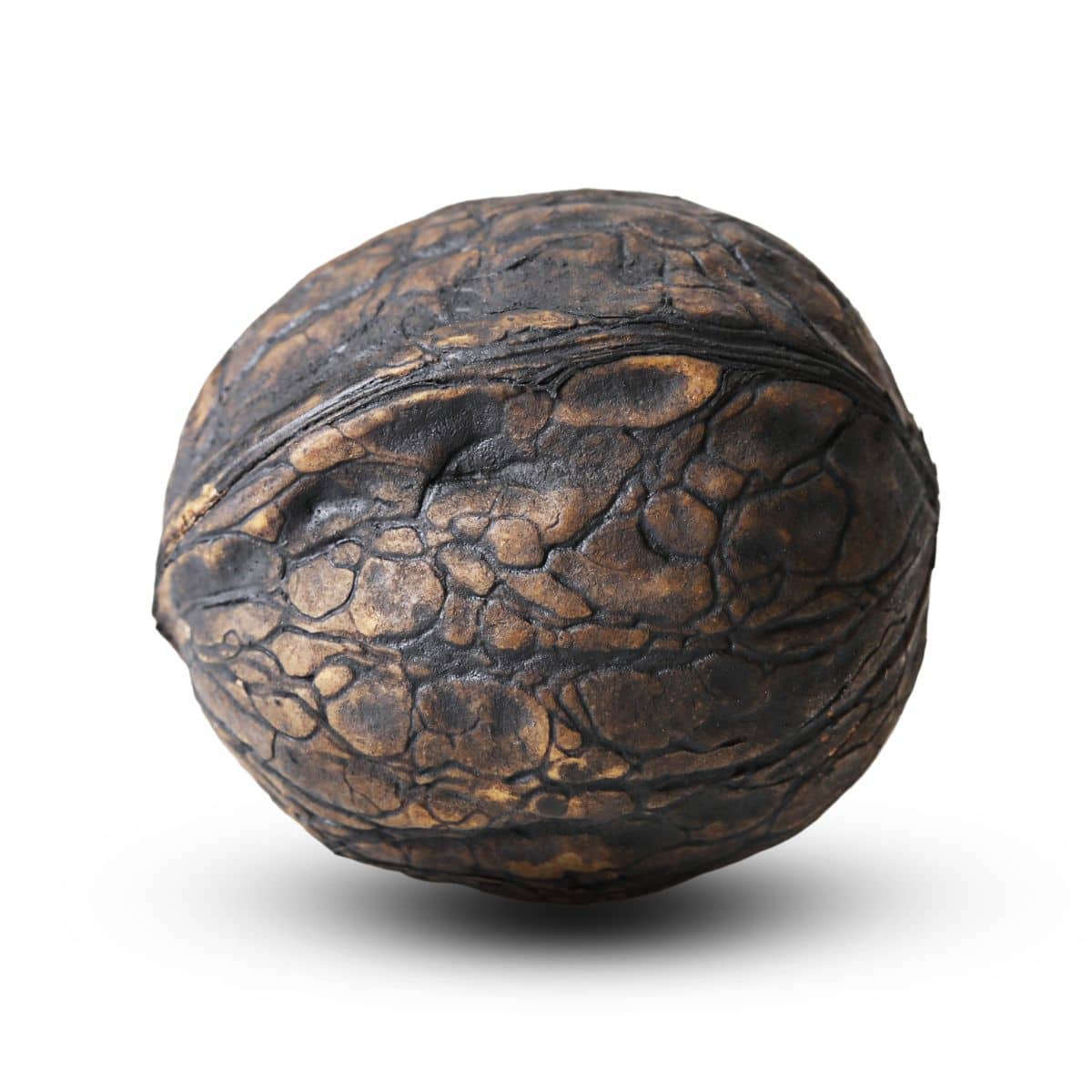
Andean walnuts are a variety of walnuts that are native to the Andean regions of South America, particularly Peru and Ecuador. They are sometimes referred to as Peruvian walnuts or Ecuadorian walnuts, depending on their specific origin. Andean walnuts are generally smaller in size than other walnut varieties, averaging around 2.5cm (1 inch) in length.
Andean walnuts have a rich, buttery flavor with a slightly sweet and earthy undertone. They are known for their smooth and mellow taste making them perfect for a variety of culinary preparations. They can be eaten as a snack, added to baked goods, or incorporated into savory dishes, such as salads or pasta dishes.
Argan Nuts
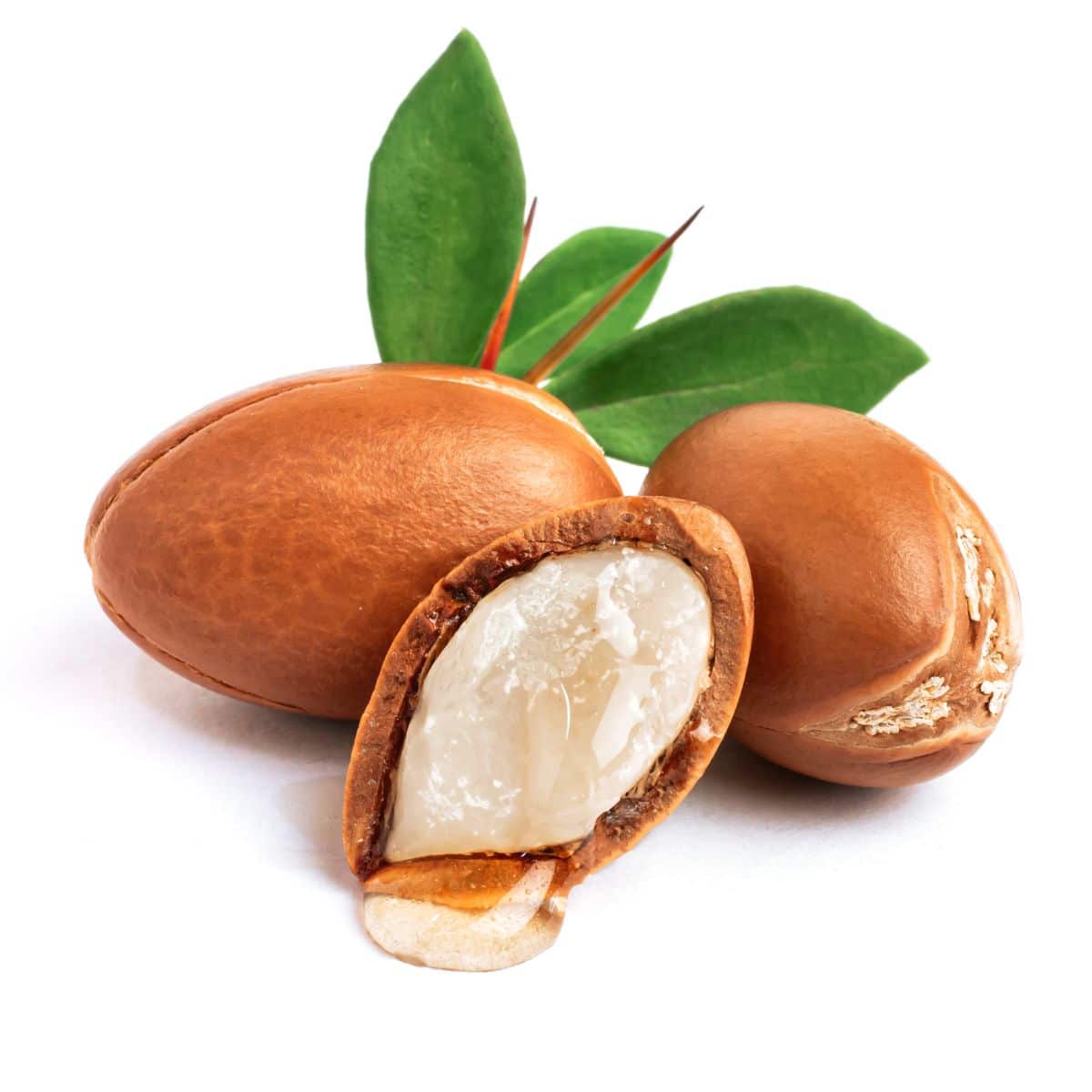
Argan nuts come from the argan tree, which is native to Morocco. These trees are primarily found in the southwestern parts of the country making them truly a regional specialty. Argan nuts are relatively small and round, measuring about 2 centimeters in diameter.
Due to their high oil content, Argan nuts are primarily used for oil production. Argan oil is commonly used in Moroccan cuisine for dipping bread, flavoring dishes, and as a salad dressing. It is also used in cosmetics and skincare products.
Baru Nuts
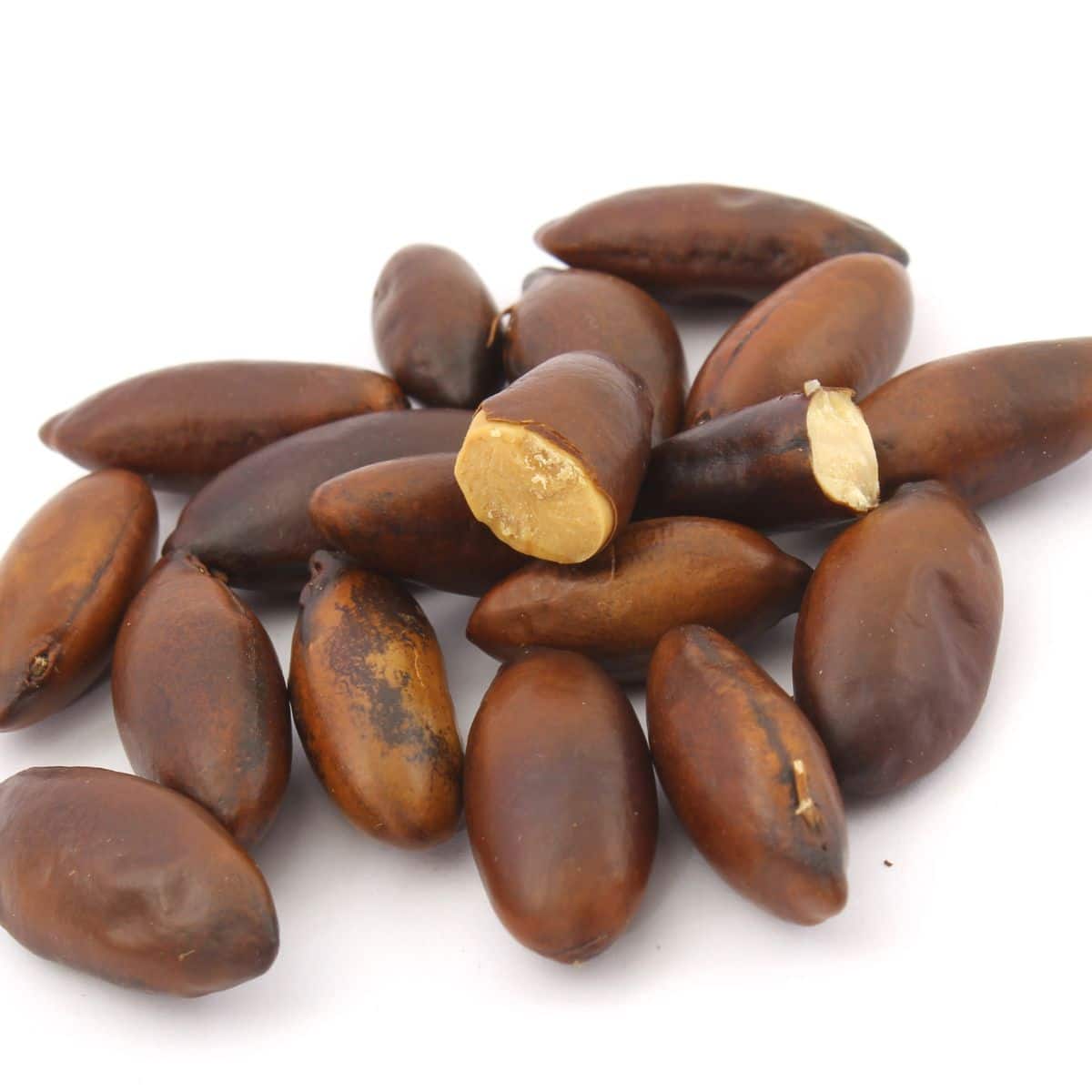
Baru nuts are native to the cerrado savanna region of Brazil, particularly in the states of Goiás, Tocantins, and Minas Gerais. Baru nuts are similar in size to almonds, measuring around 2 centimeters in length.
Baru nuts have a unique flavor profile, often described as a combination of peanuts and almonds. They can be eaten raw or roasted and are used in a variety of dishes, such as snacks, nut butters, or to produce baru flour, which can be used in baking.
Beech Nuts
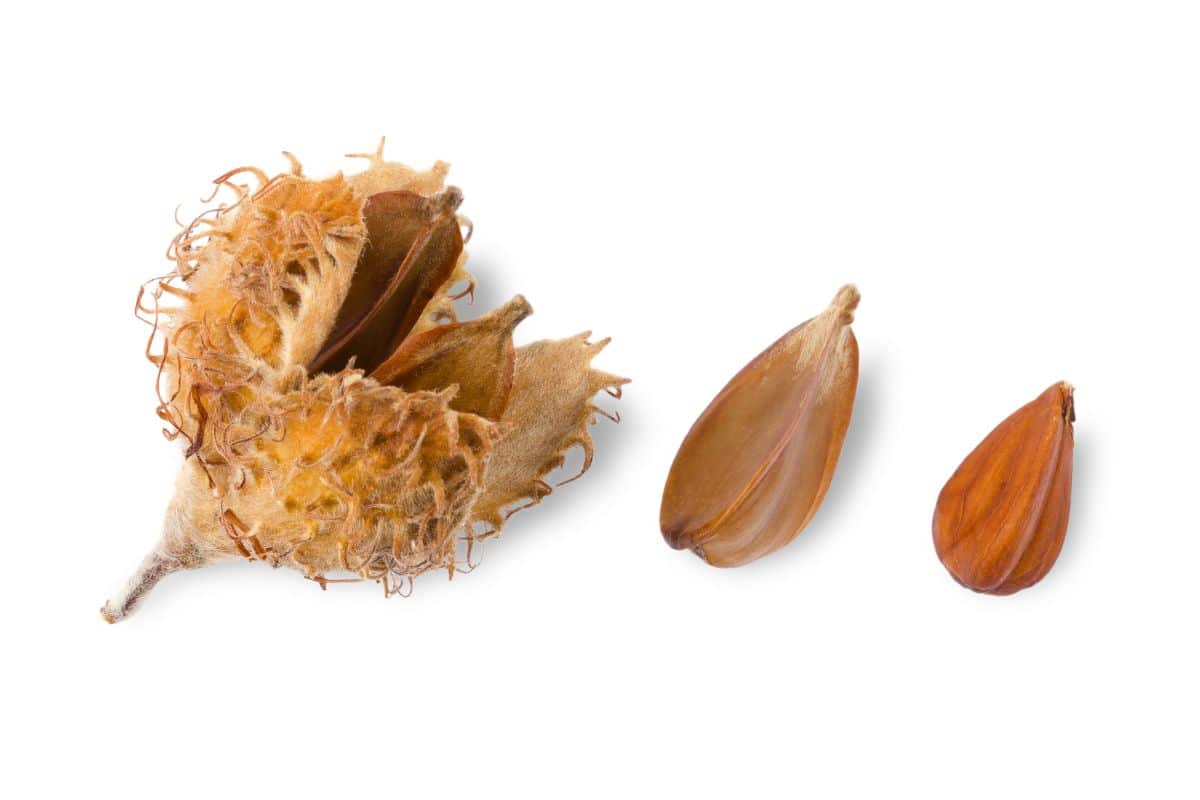
Beech nuts are the small triangular nuts produced by beech trees native to Europe, Asia, and North America. Beech nuts are small, measuring approximately 1-1.5 centimeters in length.
While beech nuts are edible, they are not widely used in culinary applications. They have a high tannin content, which makes them bitter and astringent. They have, however, been historically used in some regions as a source of oil or flour. Beechnuts are much more commonly eaten by wildlife than humans.
Betel Nuts
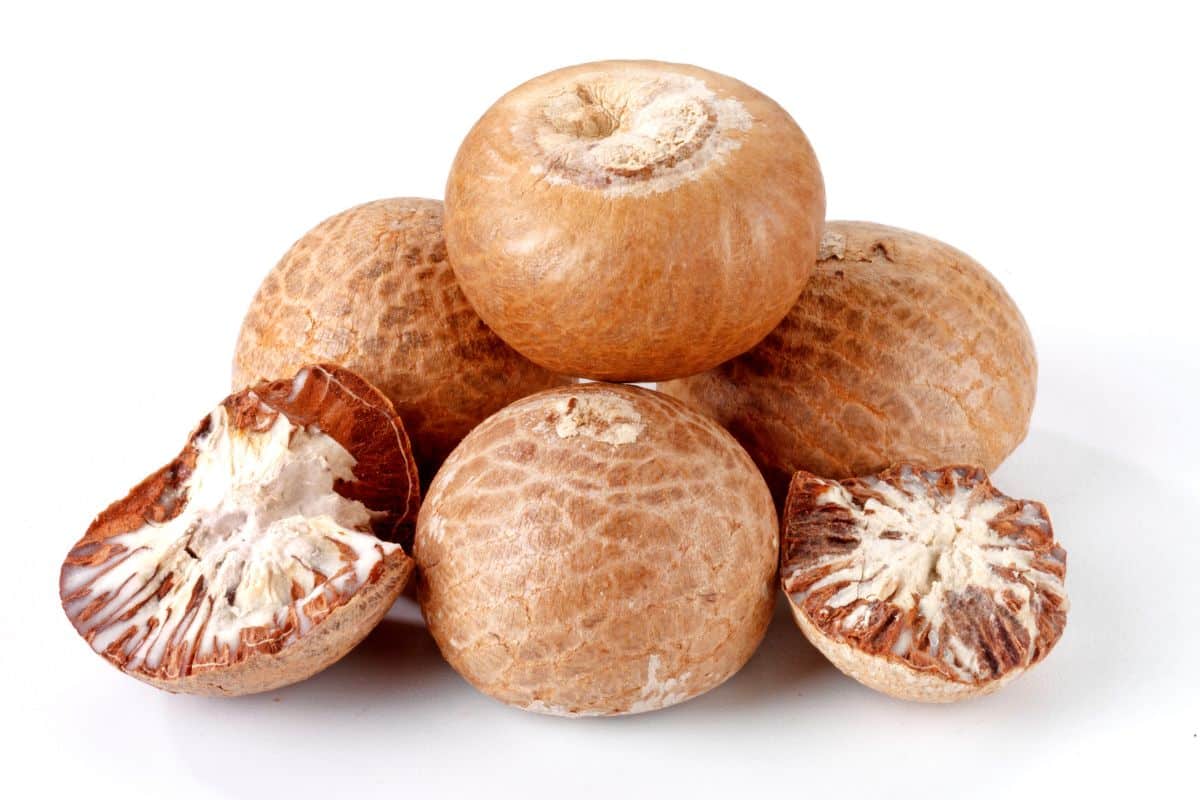
Betel nuts, also known as areca nuts, come from the areca palm tree (Areca catechu), which is native to Southeast Asia. Betel nuts are usually small to medium-sized, similar in shape to almonds, and are enclosed within a hard shell. They have a mild, slightly bitter taste with a nutty aroma.
Betel nuts are commonly chewed in many parts of Asia for their stimulating and refreshing effects. They are also used in traditional medicine, as an ingredient in various dishes, and in the preparation of betel quid. This is a mixture of betel nuts, betel leaves, and other ingredients that is chewed as a mouth freshener or for cultural and ceremonial purposes.
Bitter Almond
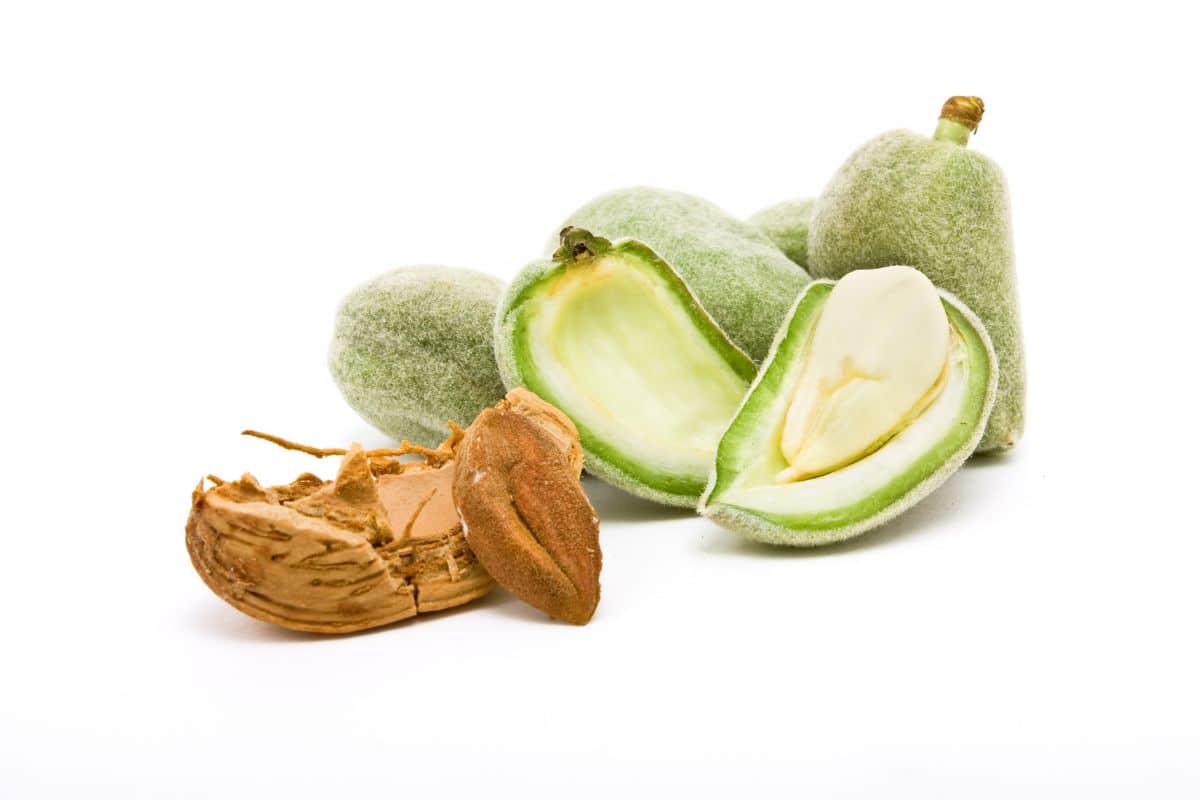
Bitter almonds come from a variety of the almond tree native to the Middle East and Central Asia. Bitter almonds are similar in size and shape to sweet almonds, typically small and oval. As the name suggests, bitter almonds have a strong, intense bitter flavor and a distinct almond aroma.
Bitter almonds are not typically consumed directly due to their bitter taste and the presence of a compound called amygdalin, which can release cyanide when ingested. They are, however, sometimes used sparingly in cooking and baking to add a hint of almond flavor to dishes, particularly in traditional Mediterranean cuisine.
Black Walnuts
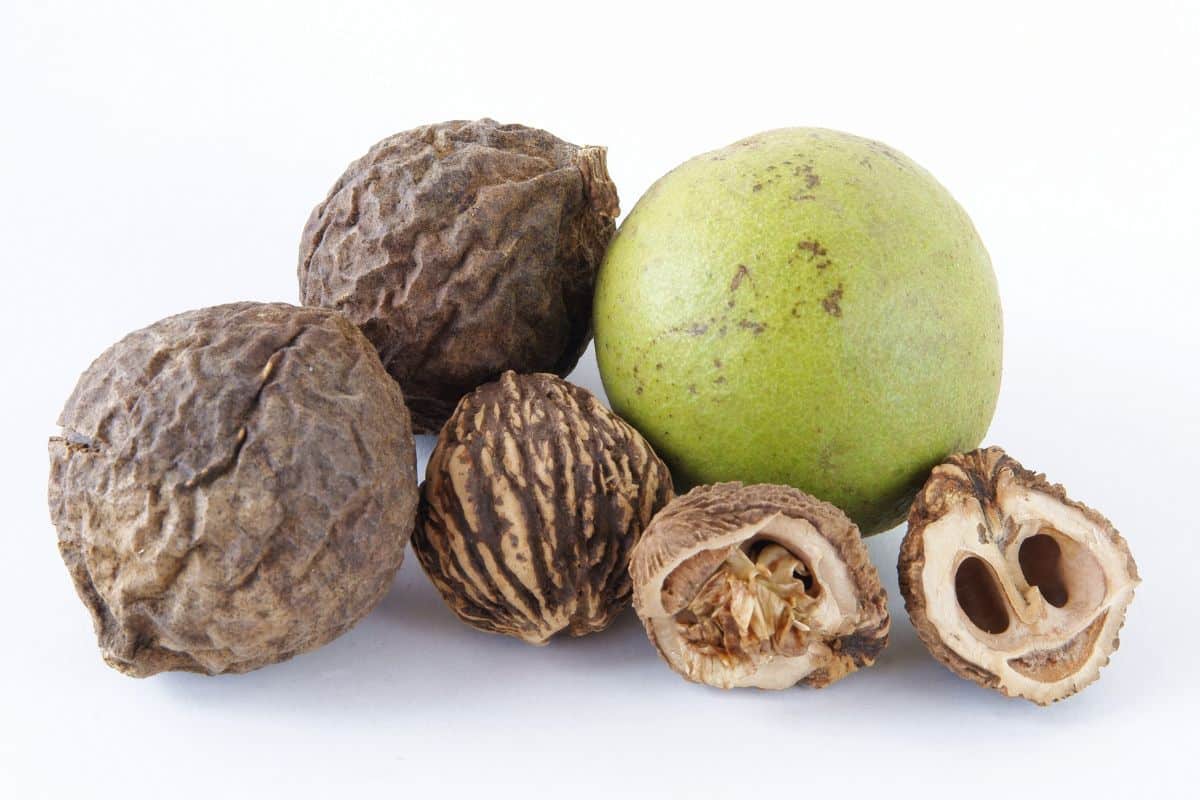
Black walnuts are native to North America, particularly the eastern United States. They are medium-sized nuts, and a bit smaller than English walnuts. They have a thick, hard shell that can be challenging to crack.
Black walnuts have a robust, rich, and earthy flavor. They are more intense and slightly bitter compared to the milder taste of English walnuts. Just like English walnuts, black walnuts are also used in baking, confectionery, and desserts.
Blanco Almond
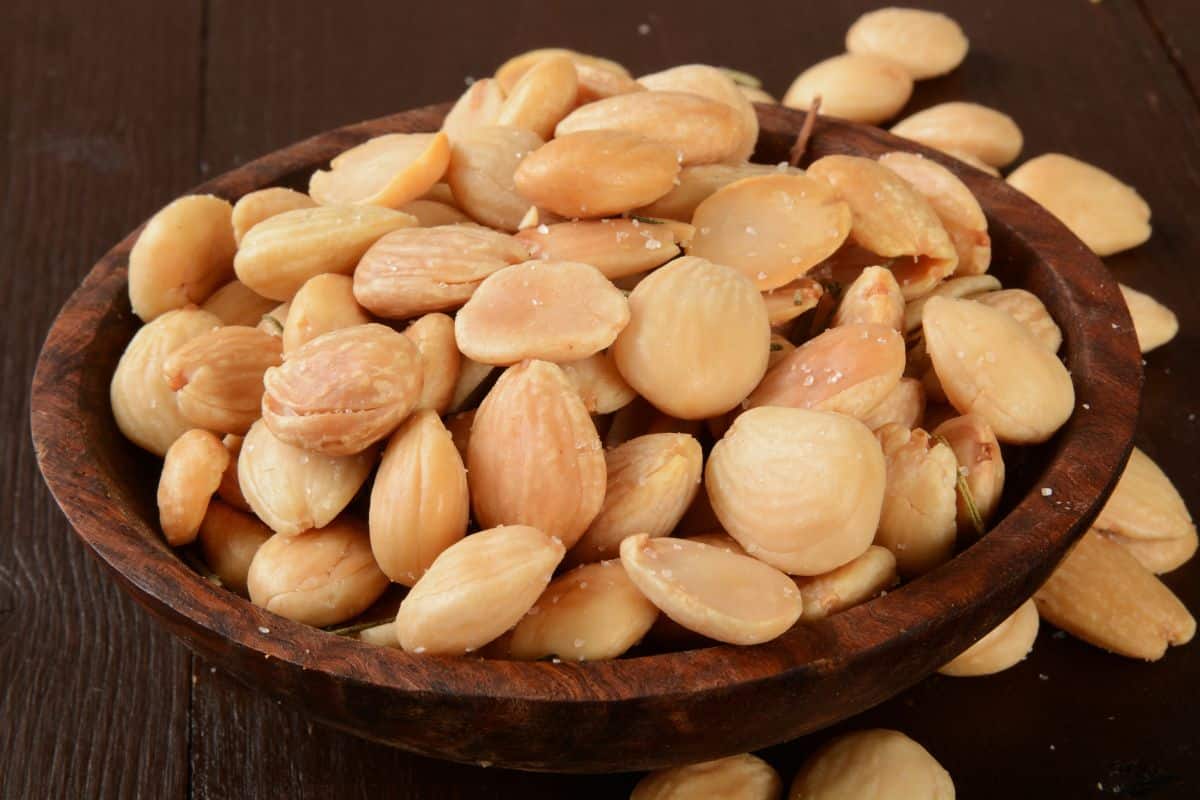
Blanco almonds are a variety of almonds grown primarily in Spain, and sometimes called marcona almonds. They are typically small to medium-sized and have a flat, rounded shape. Blanco almonds have a sweet, delicate flavor and a buttery, moist texture.
Blanco almonds are loved for their taste and are often enjoyed as a snack on their own. They are also commonly used in Spanish cuisine, particularly in dishes like tapas, desserts, and pastries. Marcona almonds are often blanched and roasted to enhance their flavor and texture.
Brazil Nuts
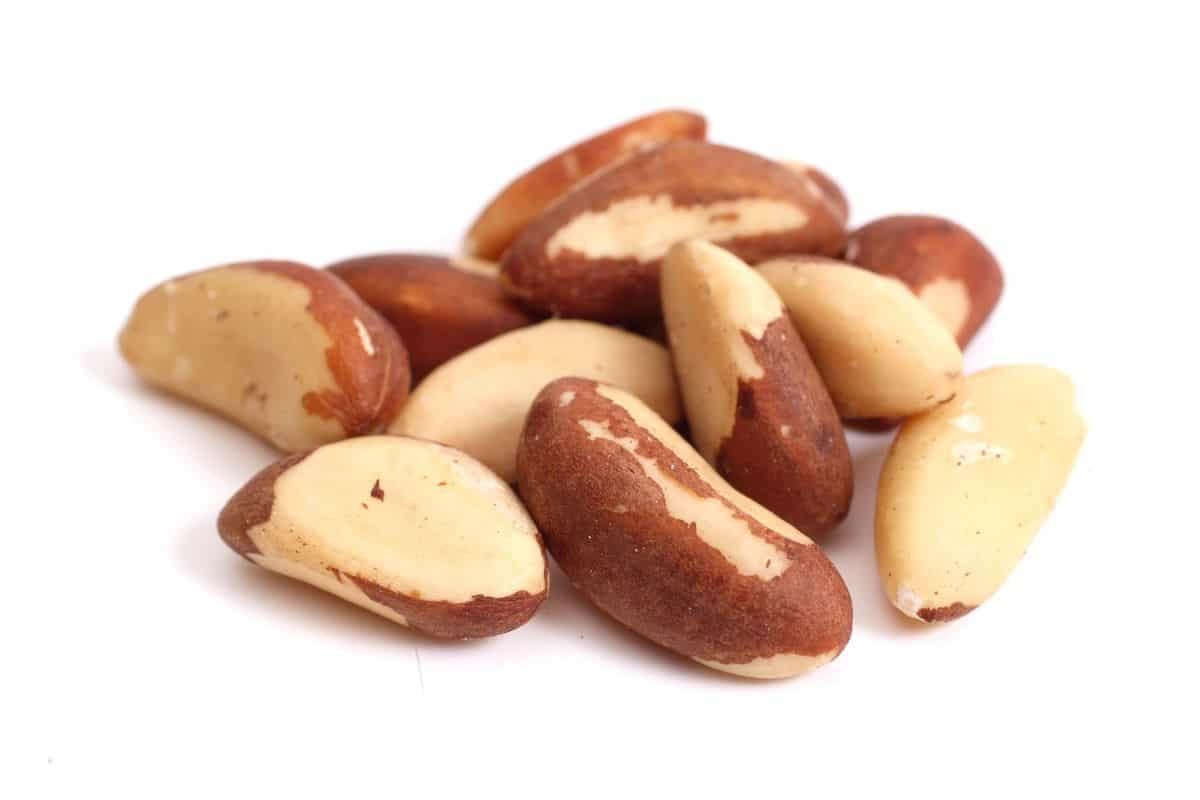
Brazil nuts come from the Brazil nut tree (Bertholletia excelsa), which is native to the Amazon rainforest in South America, mainly Brazil, Peru, and Bolivia. Brazil nuts are large and have a round or oval shape. They are enclosed within a thick, hard shell and have a rich, creamy flavor with a slightly sweet and nutty taste.
Brazil nuts are often eaten as a snack on their own or added to various recipes. They are commonly used in baking, confectionery, and desserts such as cookies, cakes, and fudge. Brazil nut oil, extracted from the nuts, is also used in cooking and as a nutritional supplement.
Breadnut
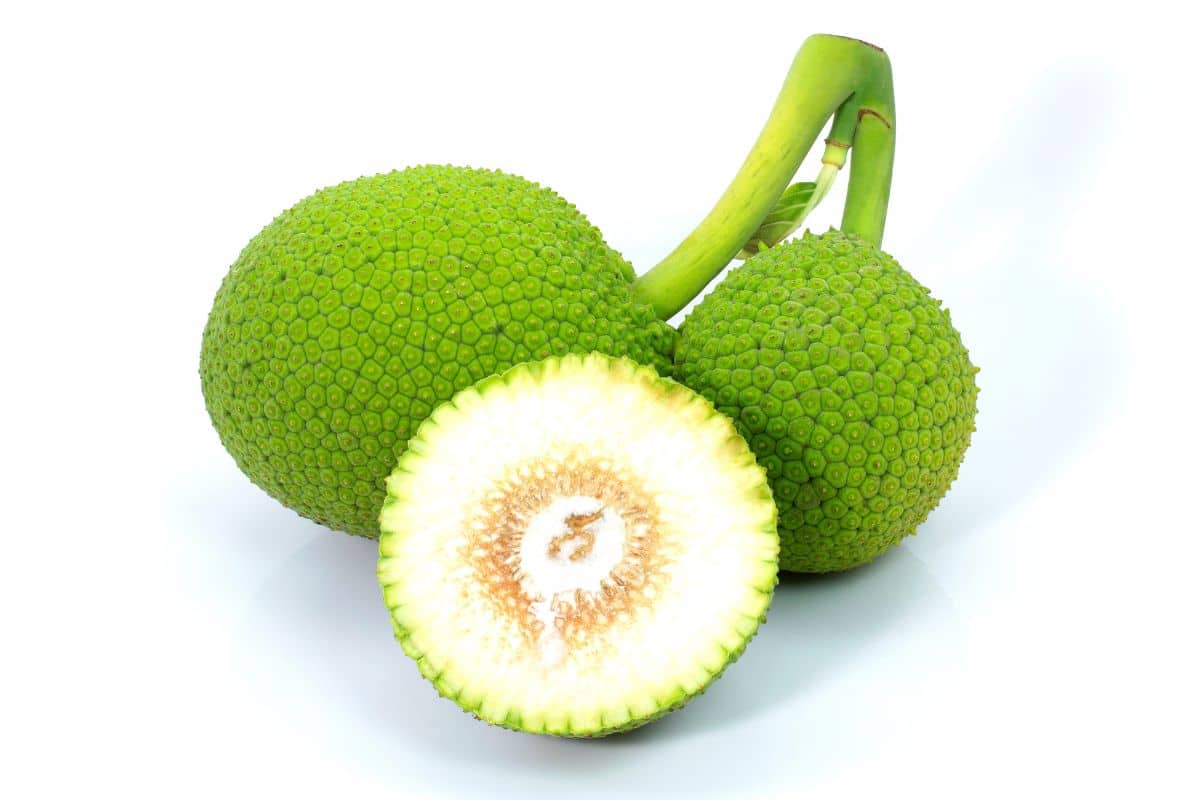
The breadnut, also known as the Maya nut, comes from the tropical regions of Mexico, Central America, and the Caribbean. Breadnuts are medium-sized nuts, roughly the size of a chestnut. Their flavor is described as mildly sweet and nutty, similar to roasted chestnuts.
Breadnuts can be roasted, ground into flour, or cooked to make various dishes. The flour is often used as a gluten-free alternative in baking, and the nuts can be added to soups, stews, and desserts.
Bunya Nut
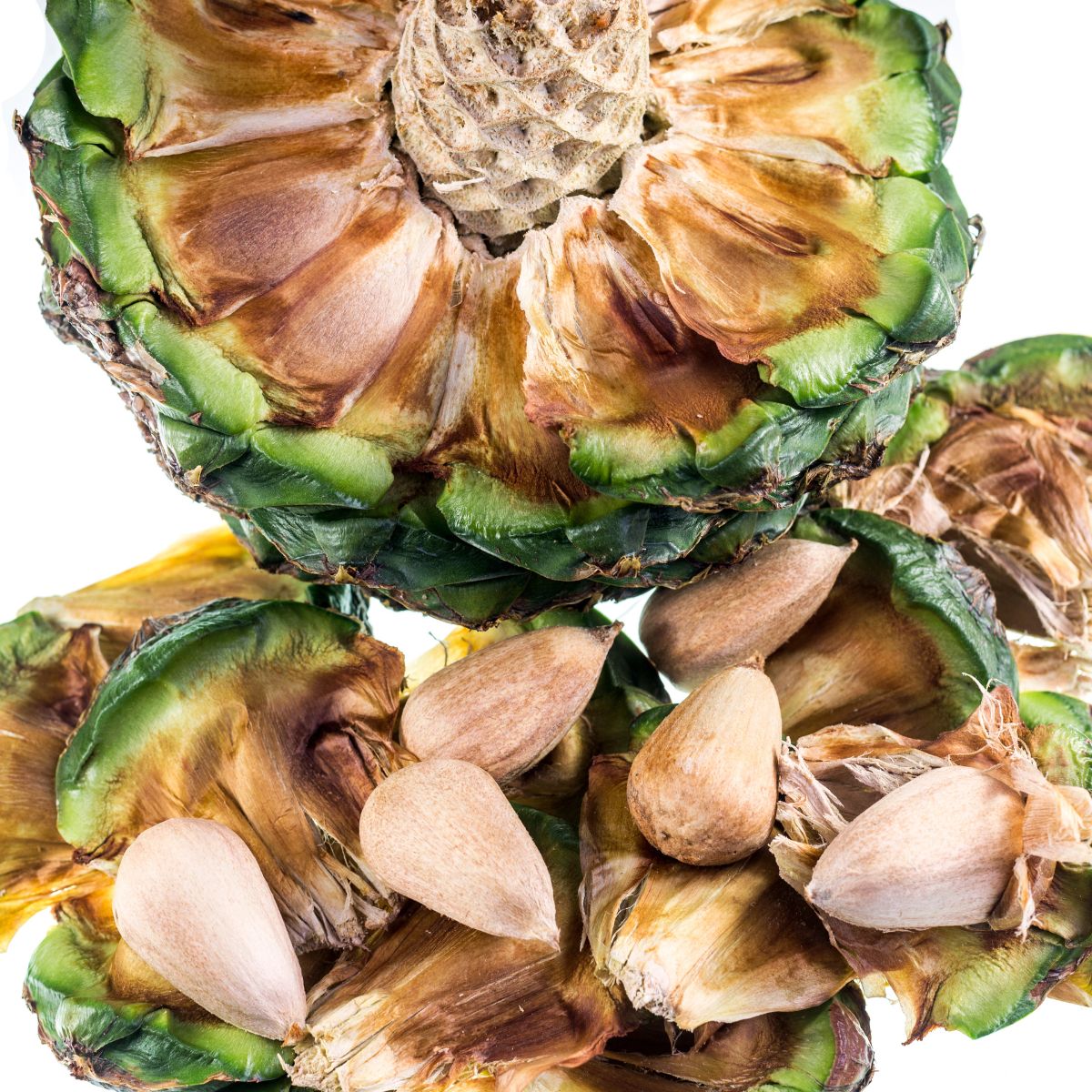
Bunya nuts are native to Australia, particularly the eastern regions. Bunya nuts are relatively large, often weighing 15g (½ an ounce) or more, and have a flavor similar to starchy vegetables with a mildly sweet and nutty taste.
Bunya nuts are commonly roasted or boiled before consuming. They can be used in savory dishes such as stir-fries, salads, and stews, or ground into flour for baking.
Butternuts
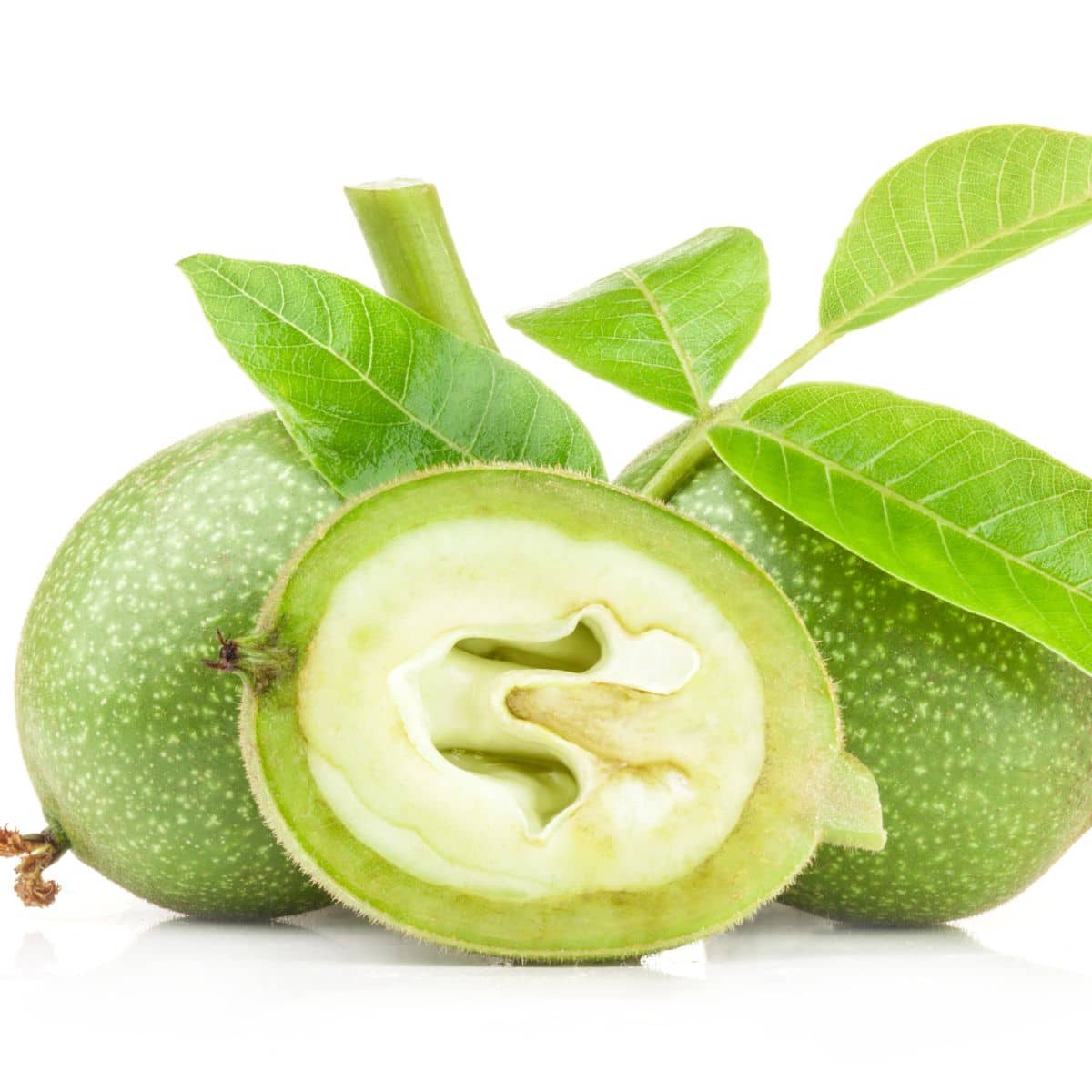
Butternuts, also known as white walnuts, are native to the eastern United States and southern Canada. They are medium-sized nuts, similar in size to walnuts, and have a rich, buttery flavor with a slightly sweet undertone. Don’t be fooled by their name though, hey are not related to the popular butternut squash.
Butternuts are often enjoyed roasted or used in baking. They can be added to salads, used as a topping for desserts, or incorporated into various recipes such as bread, cakes, and cookies.
Canarium Nut
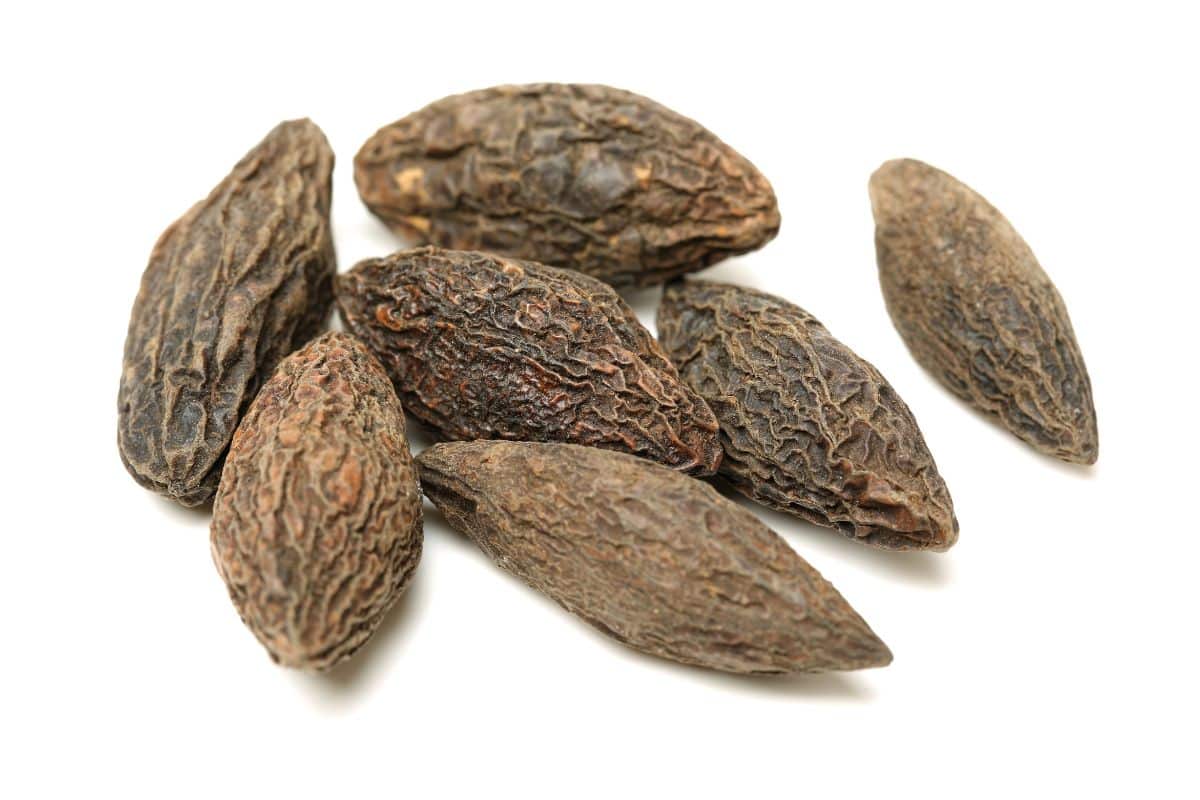
Canarium nuts are native to various regions of Asia, including Indonesia, the Philippines, and Malaysia. They are relatively small, about the size of a large almond. Canarium nuts have a mild and slightly sweet flavor, resembling a combination of almond and cashew.
Canarium nuts are commonly eaten roasted or used in confections, pastries, and desserts. They can also be used to make oils or incorporated into savory dishes like curries and stir-fries.
Candle Nuts
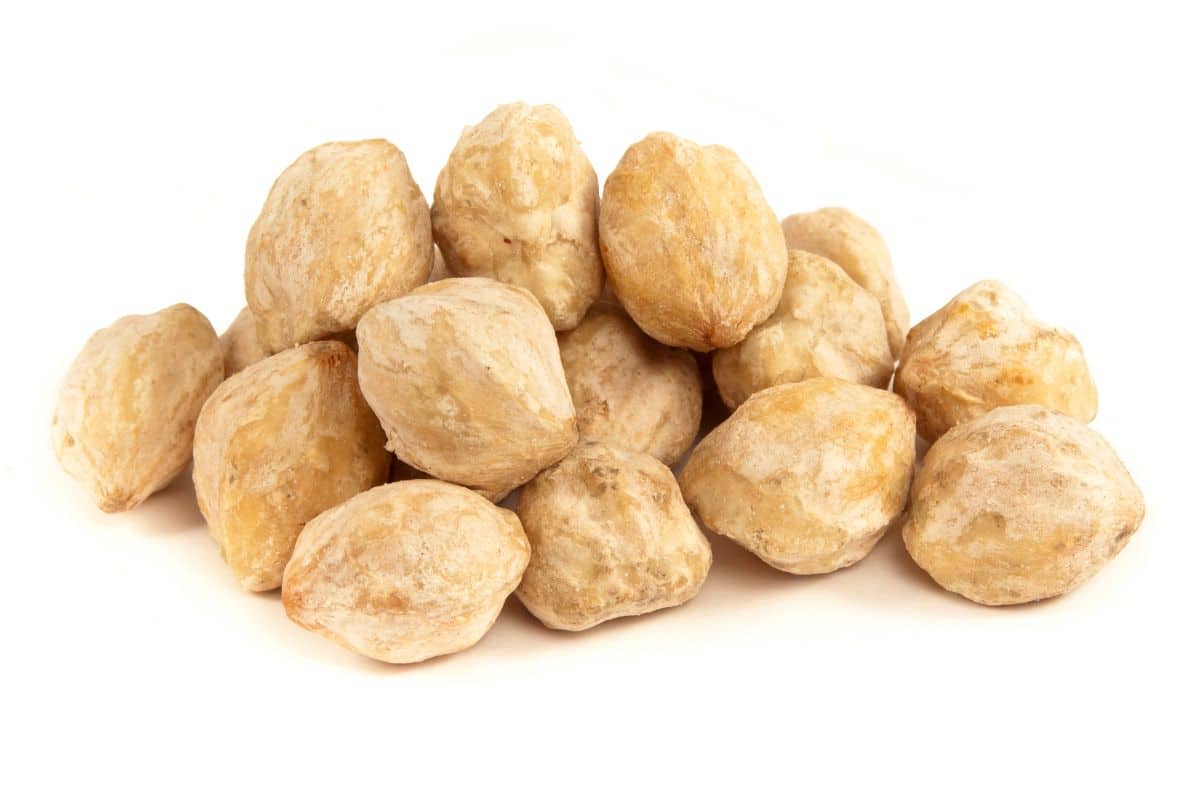
Candle nuts, also known as kukui nuts, are native to Polynesia and are found in various tropical regions around the Western Pacific. Candle nuts are small to medium-sized, similar to macadamia nuts, and are known for their rich, oily flavor with a slightly bitter and earthy taste.
In traditional Polynesian cuisine, candle nuts are ground into a paste and added to dishes like curries, sauces, and marinades. They are rarely eaten raw due to their bitterness and are typically roasted or cooked before use.
Caramel Almond
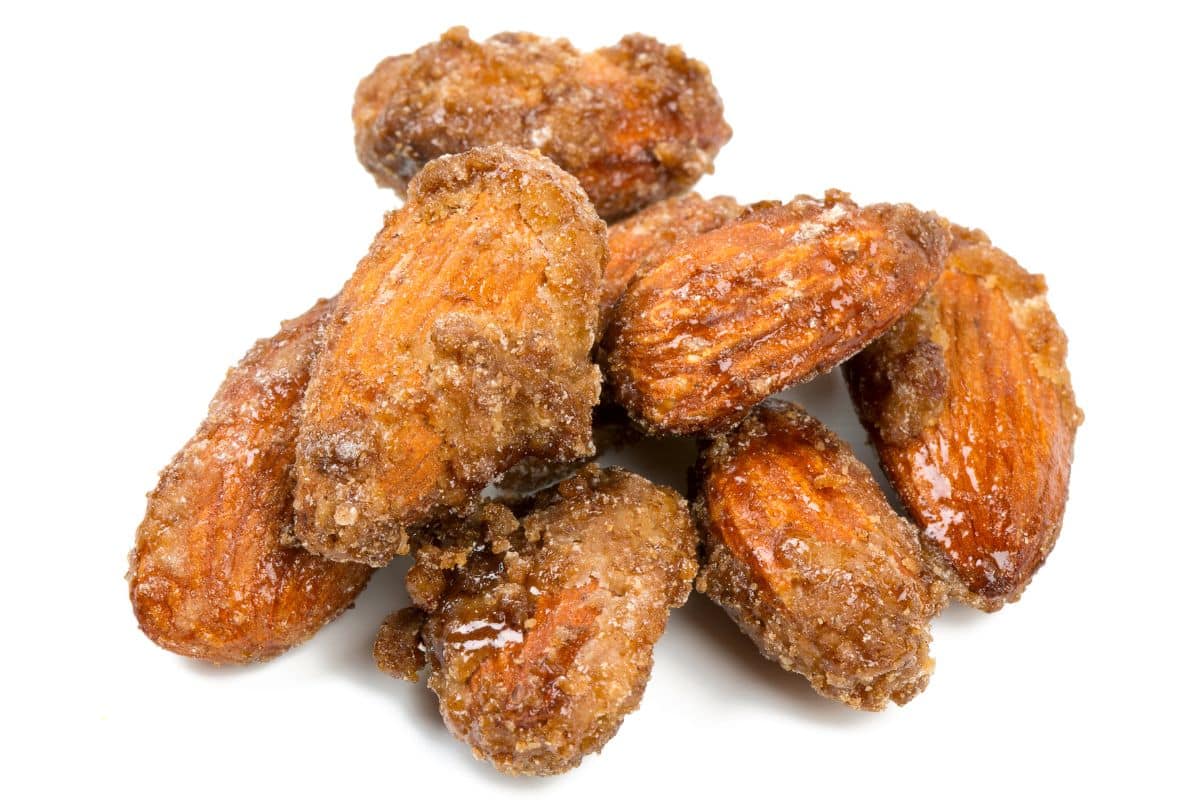
There is no specific origin for caramel almonds as they are created by coating almonds with caramelized sugar or syrup. Perhaps it is a stretch to call this a different type of nut, but they are such a popular treat that we had to list them.
They have a sweet and crunchy flavor due to the caramel coating, and are often eaten as a snack on their own. They can also be used as a topping for desserts like ice cream, cakes, or pastries, or added to salads or trail mixes for extra sweetness and texture.
Cashews
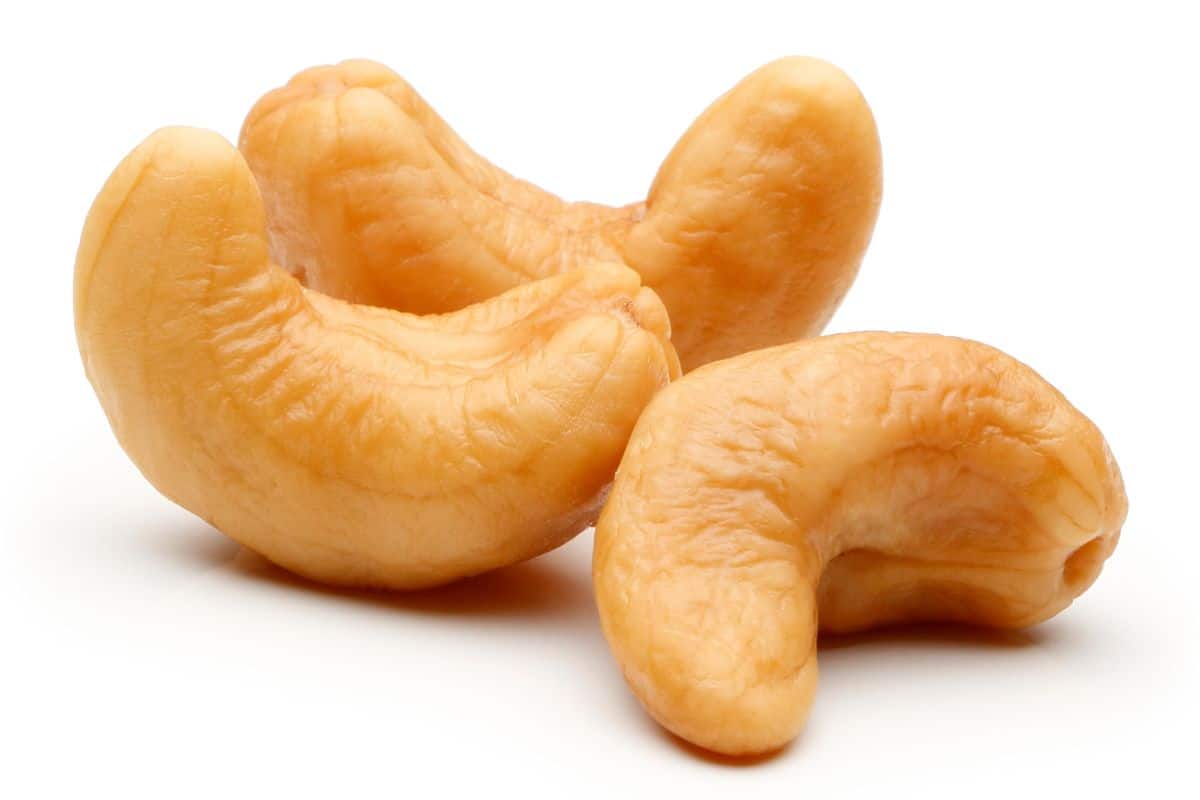
Cashews are native to northeastern Brazil but are now cultivated in several other countries, including India, Vietnam, Nigeria, and Indonesia. Cashews are medium-sized nuts with a kidney or crescent shape. Their flavor is rich, buttery, and slightly sweet.
Cashews are versatile and can be enjoyed on their own as a snack or used in both savory and sweet dishes. They are often used in stir-fries, curries, salads, and nut butters. Cashews are also a popular ingredient in vegan cheese and dairy-free desserts.
Chestnuts
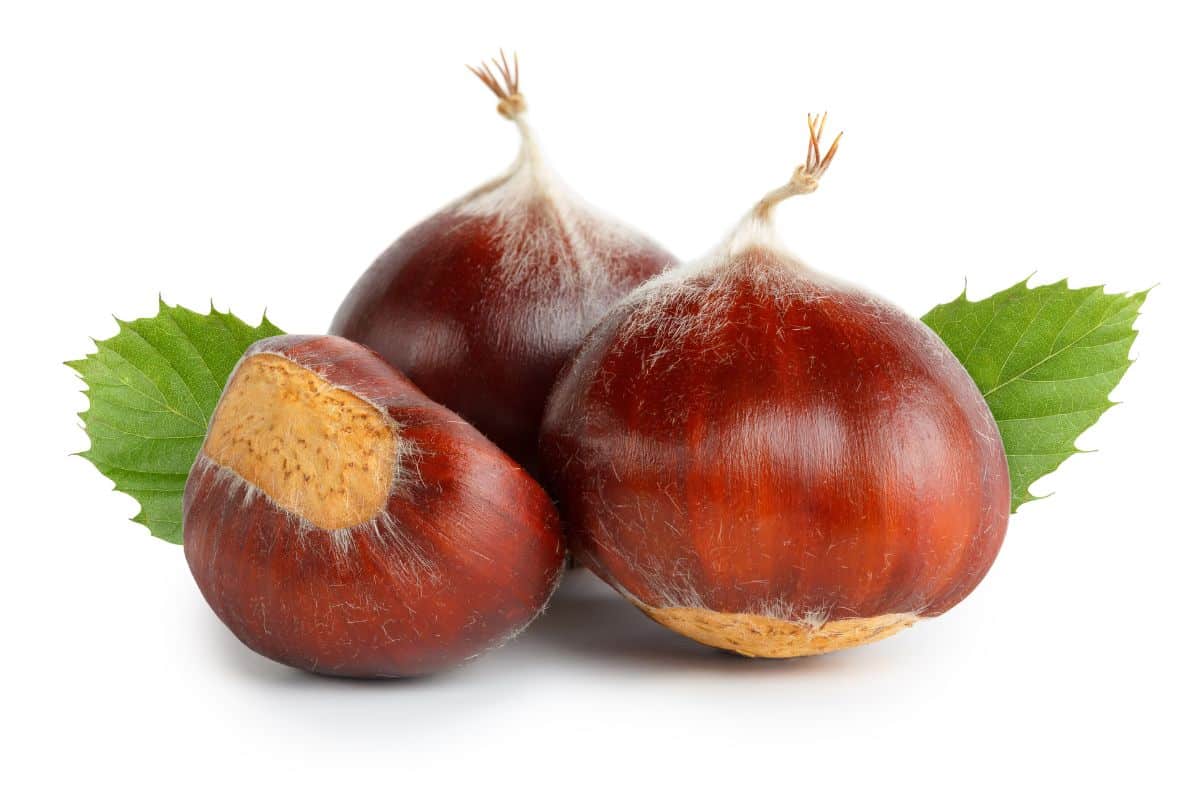
Chestnuts are native to the northern hemisphere, particularly Europe, Asia, and North America. Chestnuts are larger compared to most other nuts, with a rounded shape and a size ranging from small to medium. They’ve made a resurgence in the USA after a blight wiped out most chestnut trees in the USA around 1900.
Chestnuts have a mildly sweet and nutty flavor with a slightly starchy texture. They can be roasted, boiled, or steamed, and are commonly used in both sweet and savory dishes. Roasted chestnuts have long been a popular winter snack, thus the lyrics “chestnuts roasting on an open fire”.
Chilean Hazelnut
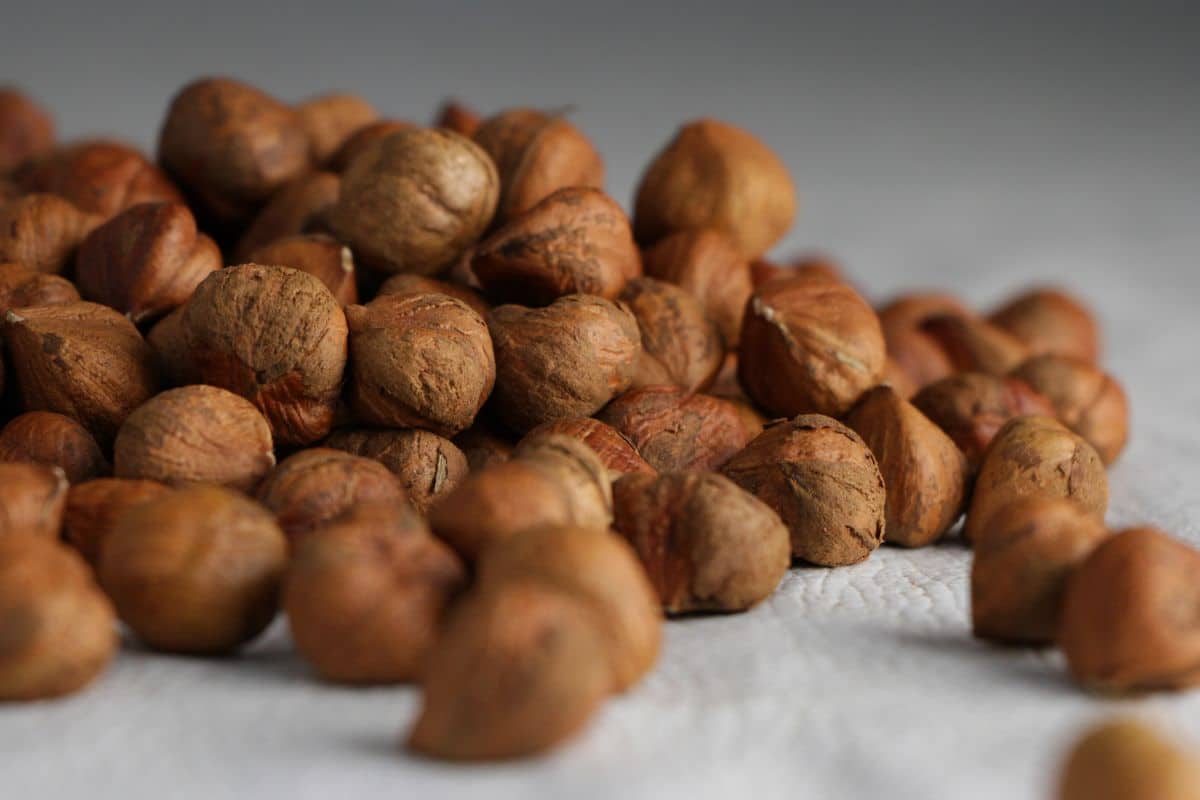
Chilean hazelnuts, also known as Chilean filberts, are native to Chile and grow predominantly in the southern regions of the country. Chilean hazelnuts are similar in size to other hazelnuts, and have a slightly sweet flavor, also similar to other varieties of hazelnuts.
Chilean hazelnuts can be eaten raw or roasted and are commonly used in baking, confections, and as a topping for desserts. They are also used in the production of hazelnut oil.
Chinese Chestnut
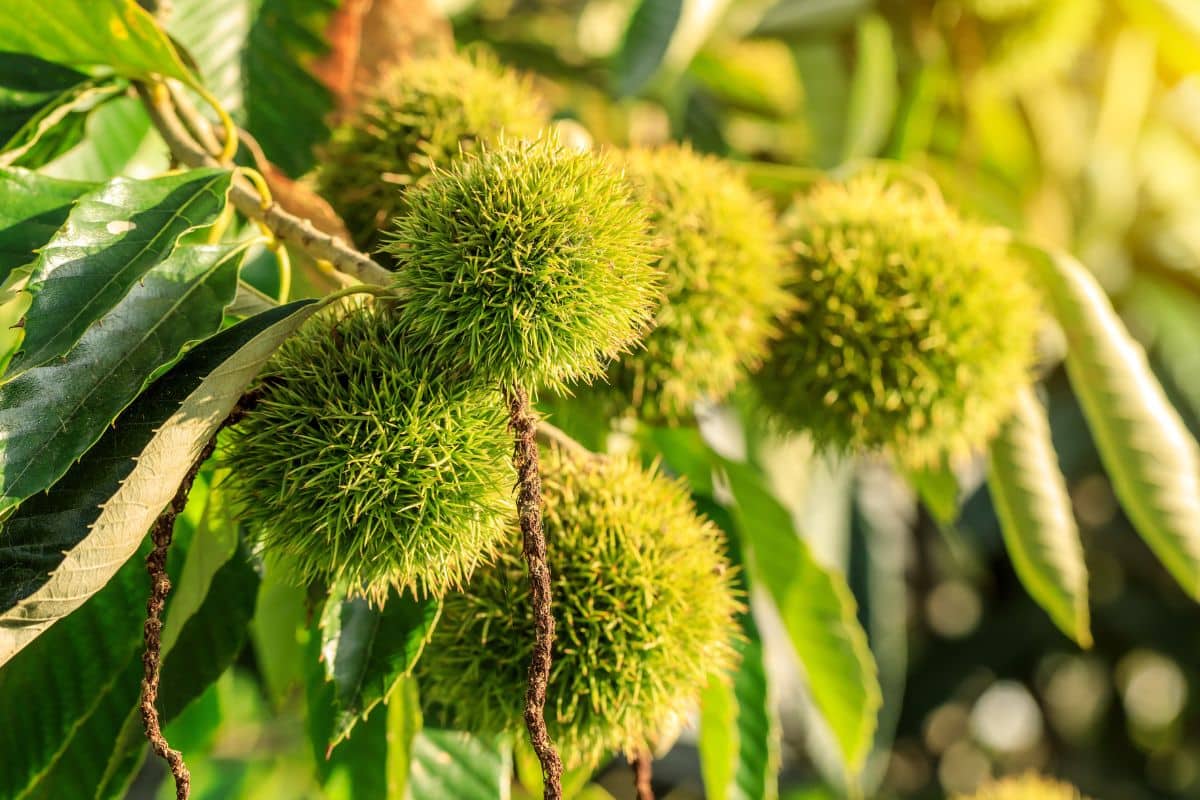
Chinese chestnuts, as the name suggests, originate from China but are now grown in many other countries as well. They are medium-sized nuts, similar to other chestnut varieties, and have a sweet and nutty flavor. These trees are becoming popular in the USA among home gardeners as they grow well and produce plenty of nuts that conveniently fall from the tree when ripe.
Chinese chestnuts are often roasted or boiled and consumed as a snack. They can also be used in stuffings, soups, desserts, or ground into flour for various culinary applications.
Dika Nuts
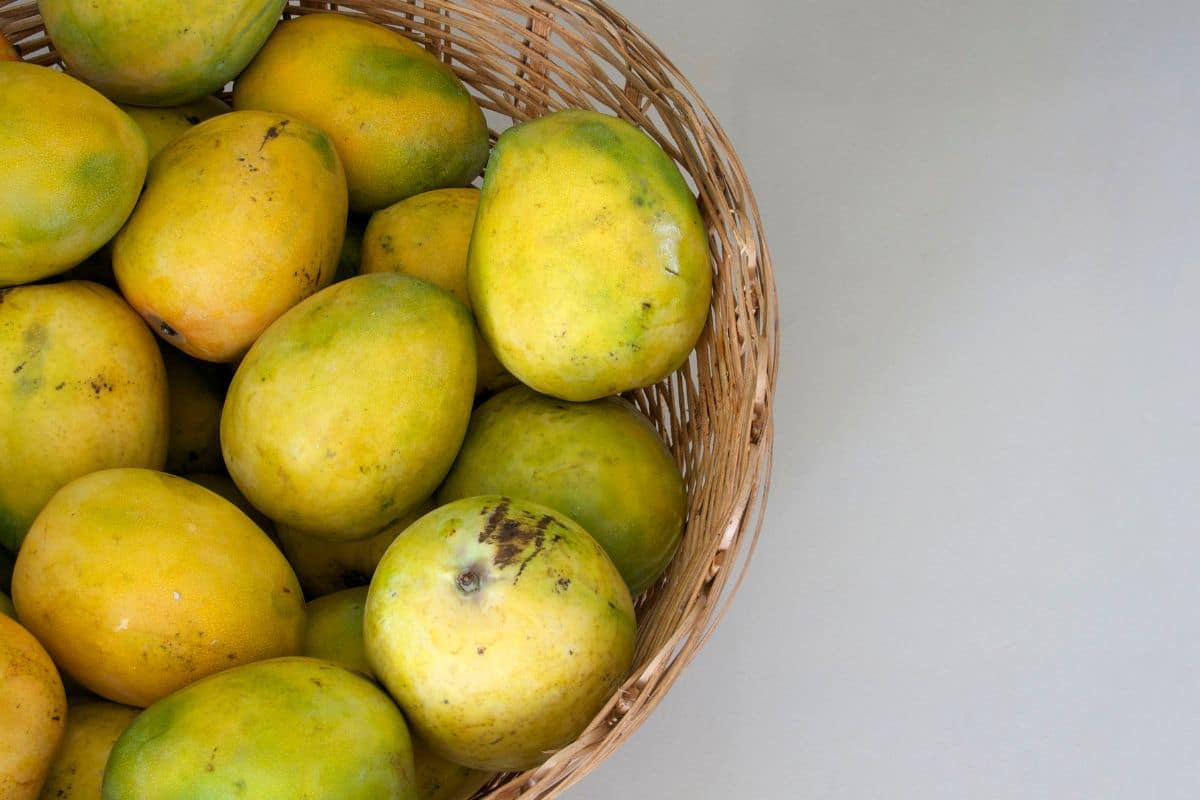
Dika nuts, also known as dawadawa, is native to Central and West Africa. Dika nuts are large, oval-shaped nuts, roughly the size of a small apple with a unique, rich, and earthy flavor.
Dika nuts are primarily used in African cuisine, particularly in Nigeria and Cameroon. They are ground into a paste or powder and used as a flavoring agent in soups, stews, sauces, and traditional dishes. The paste is fermented and used as a condiment with a distinct umami taste.
English Walnut
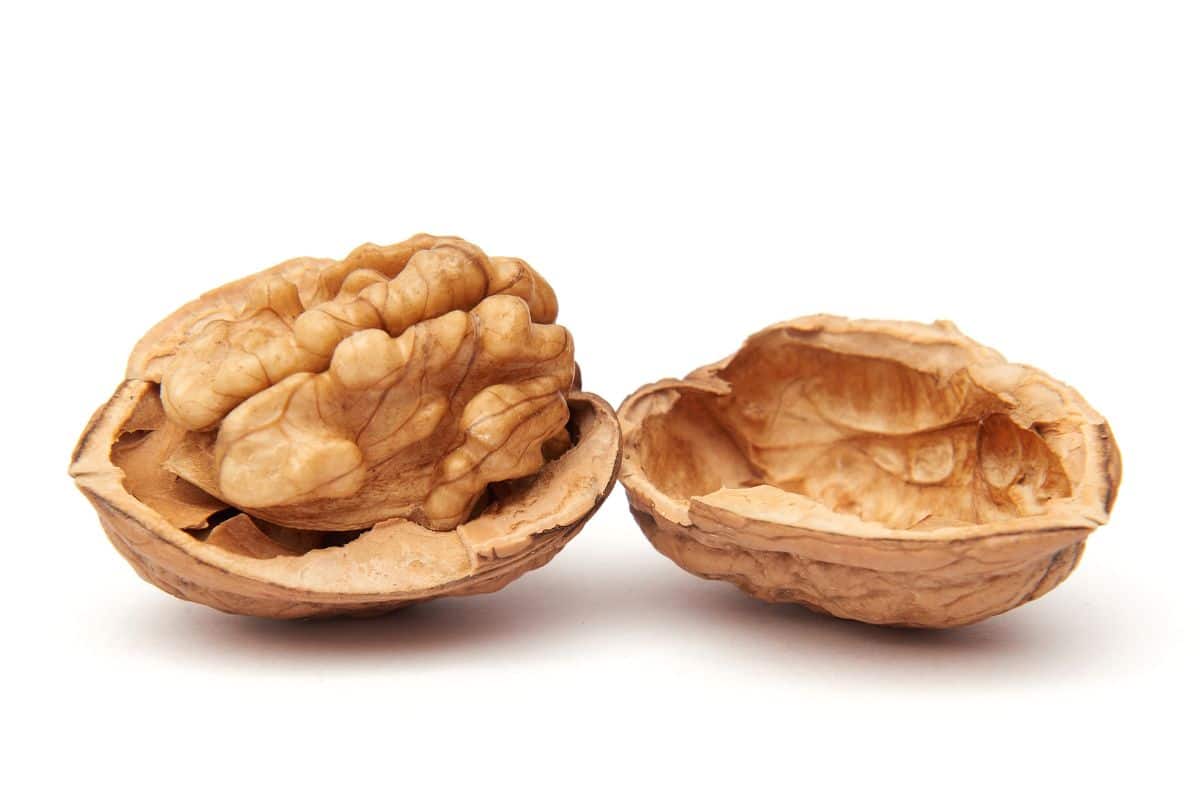
The English walnut, also known as the common walnut or Persian walnut, originates from Central Asia, primarily Iran (Ancient Persia). English Walnuts are medium-sized nuts, typically around 1-2 inches in length. They have a mild, slightly sweet flavor with a buttery undertone.
English walnuts are widely used in both sweet and savory dishes. They are commonly used in baking, such as in cakes, cookies, and pastries. They are also a popular addition to salads, cereals, and granola but can also be ground into a paste for savory uses.
Filberts
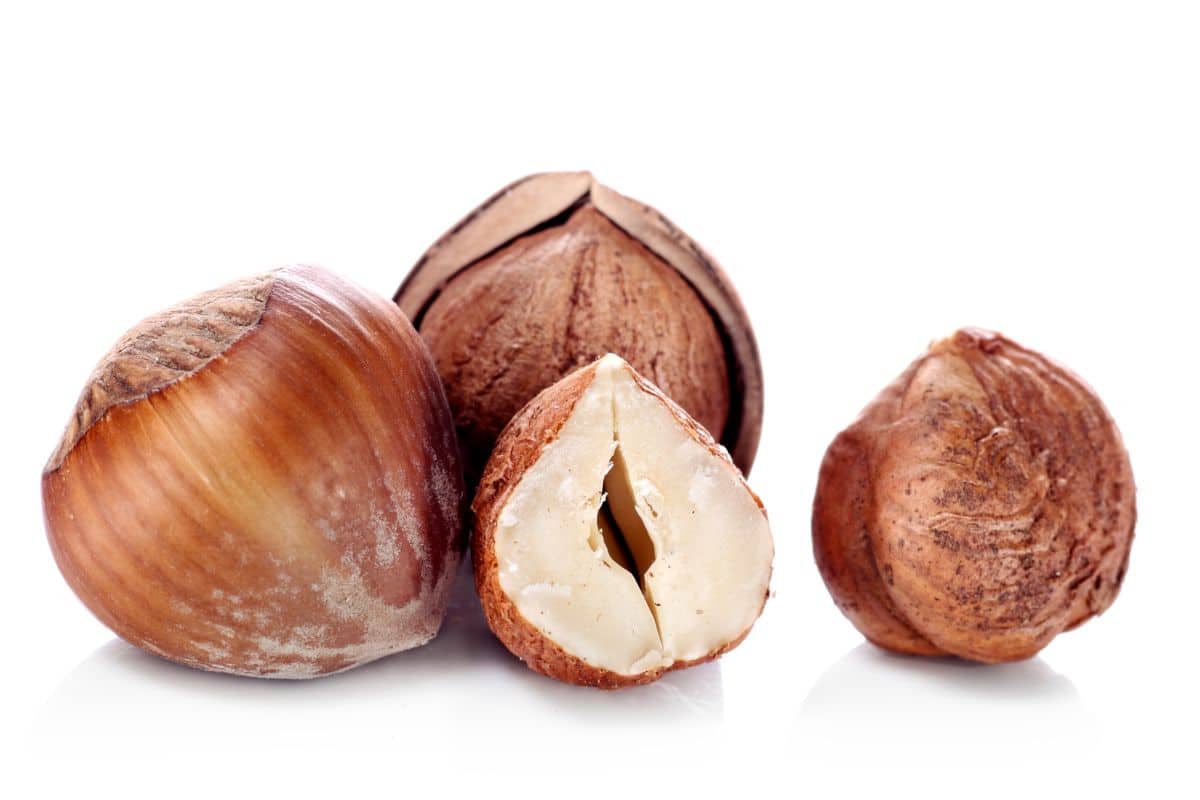
Filberts, also known as Hazelnuts, have been cultivated for centuries in various regions, including Europe, Asia, and North America. Filberts are small to medium-sized nuts, typically ranging from 1 – 2 cm in length. Filberts have a rich, slightly sweet flavor with a hint of bitterness.
Filberts are widely used in both sweet and savory recipes. They are commonly used in desserts, including chocolates, cakes, and cookies. They are also used in savory dishes like salads, roasted vegetables, and as a crust for meats. Additionally, they are popular for making hazelnut butter, spreads, and oils.
Fritz Almonds
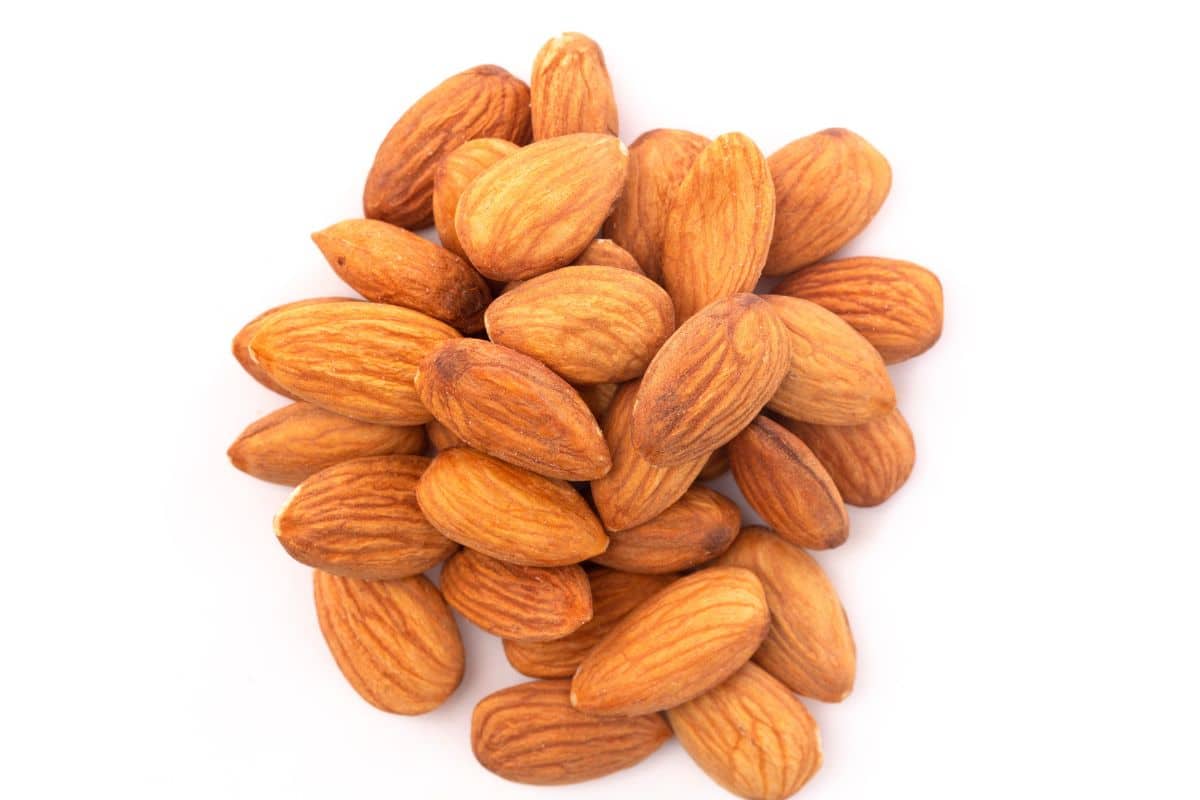
Fritz almonds are a variety of almonds that originated in California (the largest producers of almonds worldwide). Fritz almonds are medium-sized almonds, similar in size to other common almond varieties. They have a sweet, nutty flavor that is characteristic of almonds in general.
Fritz almonds are versatile, and can be used in a wide range of culinary creations. They are commonly used in baking, such as in cookies, cakes, and pastries. They can also be used in savory dishes, such as salads, stir-fries, or as a coating for meats or fish.
Gabon Nuts
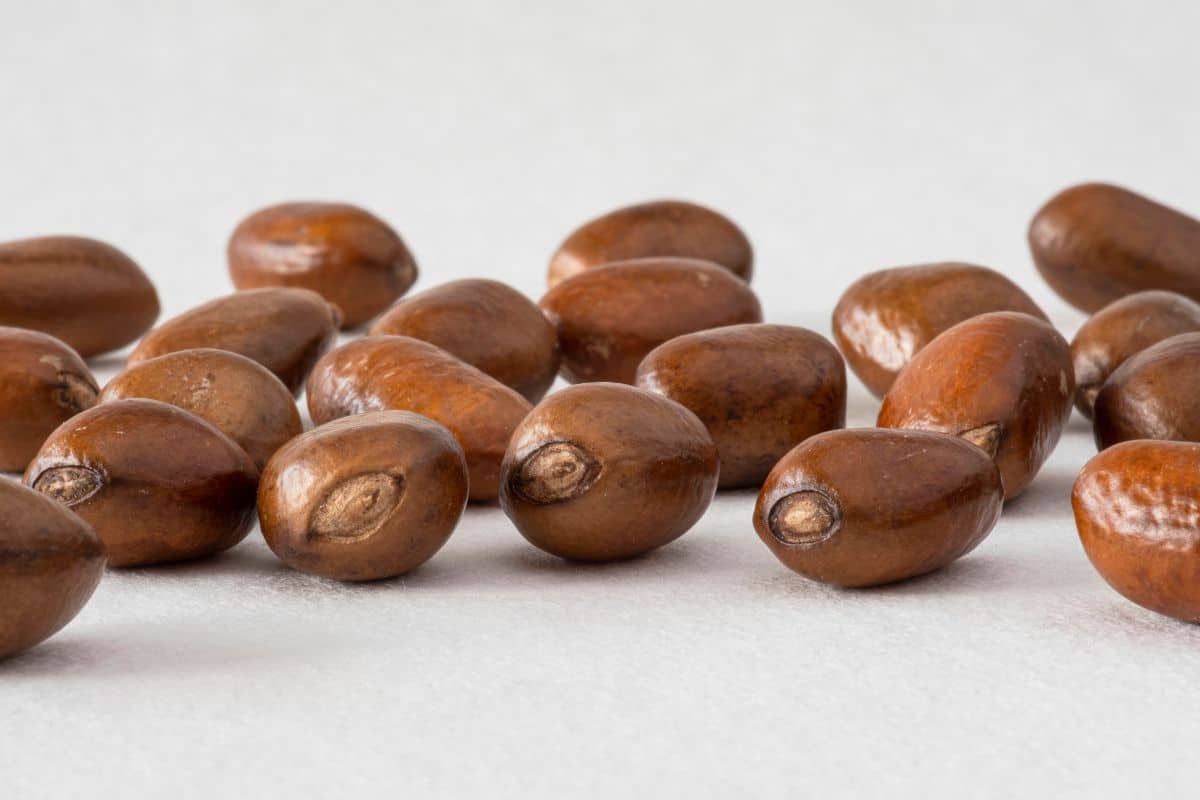
Gabon Nuts, also known as Gabon Chestnuts or African Walnuts, come from the Gabon tree (Platonia insignis), which is native to tropical regions of South America, particularly the Amazon rainforest. Gabon Nuts are large nuts, roughly the size of a small orange. They have a unique, creamy flavor with a mild sweetness.
Gabon Nuts are often consumed fresh, but can also be roasted or boiled, and the flesh eaten directly. They can also be used in desserts, such as cakes and puddings, and as an ingredient in traditional Brazilian cuisine.
Ginkgo Nuts
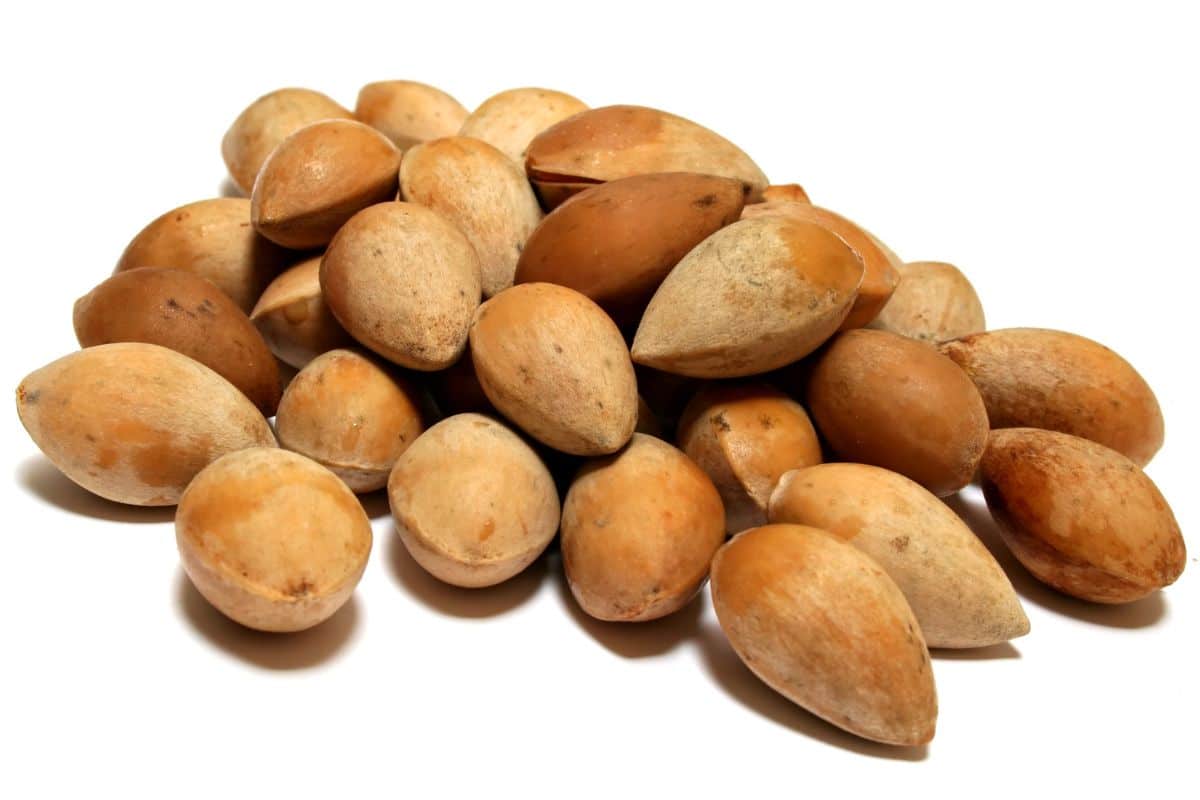
Ginkgo nuts come from the ginkgo biloba tree, which is native to China. They have been used in traditional Chinese cuisine for centuries. Ginkgo nuts are small to medium-sized nuts, roughly the size of a cherry or grape, and have a unique, slightly sweet and nutty flavor.
Ginkgo nuts are primarily used in Chinese cooking. They are commonly used in stir-fries, soups, and steamed dishes and can also be used in desserts, such as pastries and confections. However, it’s important to note that raw ginkgo nuts are toxic and must be properly cooked before consumption to remove certain substances that can cause adverse effects.
Green Almonds
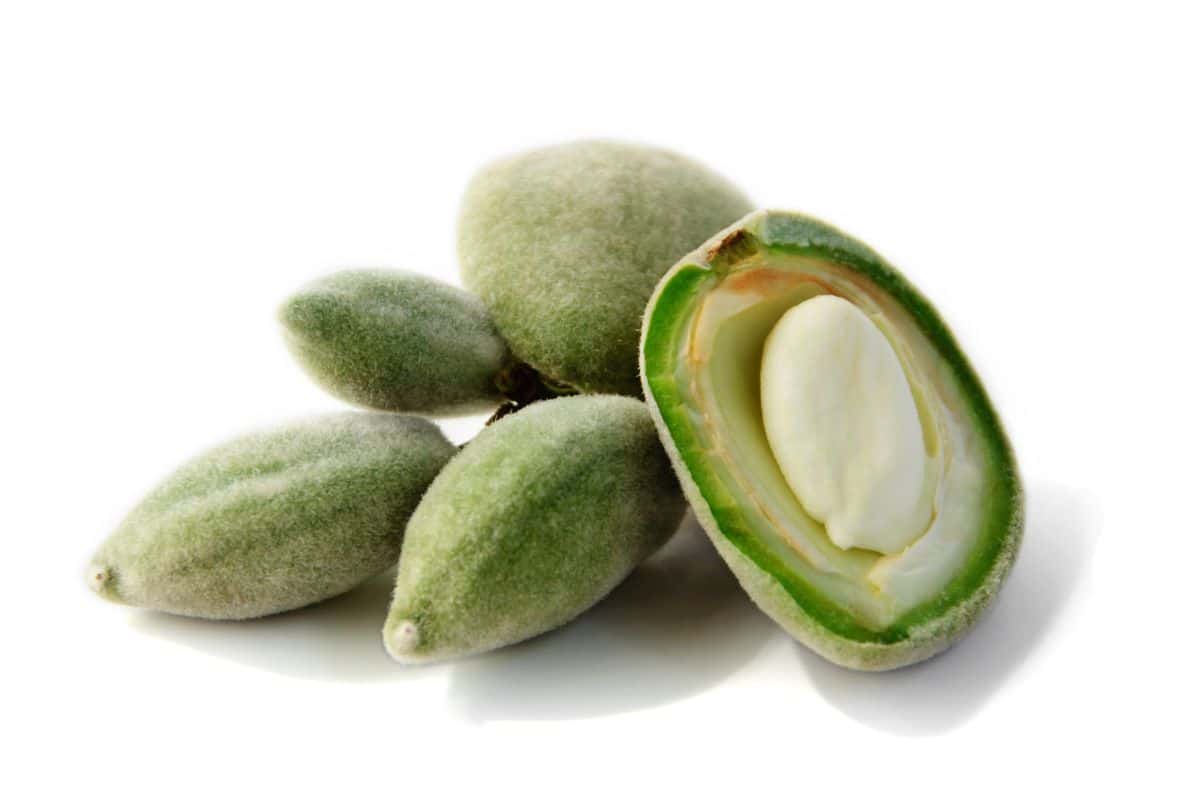
Green almonds are the unripe, immature fruit of the almond tree, so they can be any of the many almond varieties. They are harvested before the outer hull hardens and the shell forms. They are smaller in size compared to mature almonds, typically around 1 inch in length, and have a unique flavor that is tangy, tart, and slightly sour.
Green almonds are often eaten raw as a snack, particularly in the Middle East, and are often featured in Mediterranean cuisines. They can also be pickled, used in salads, or incorporated into dishes like pilafs, stews, and desserts.
Hazelnuts (See Filberts Above)
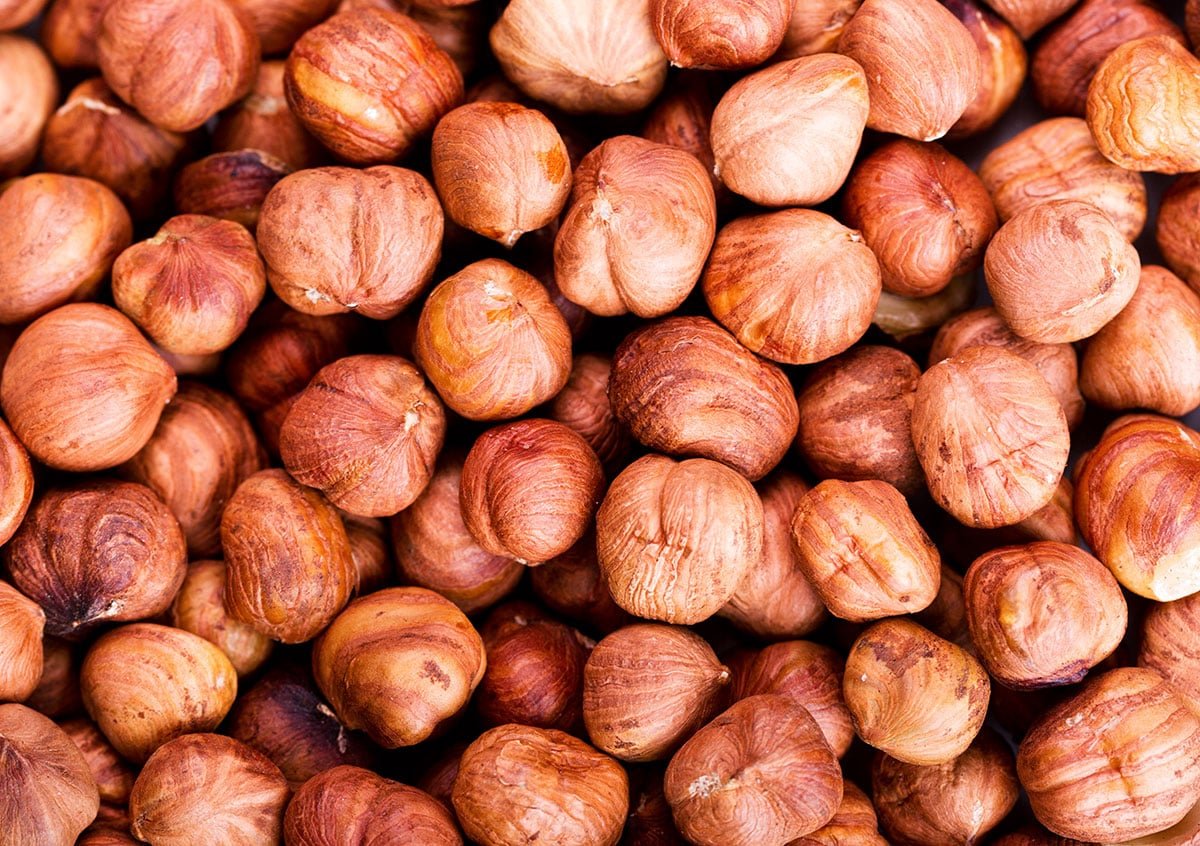
Hazelnuts and Filberts are the same nut under a different name. While we are being redundant with this second listing, we think it important to note that Hazelnuts have a super-power which is being the key ingredient in Nutella. Want to make your own? Try this Vegan Copycat Nutella.
Hickory Nuts
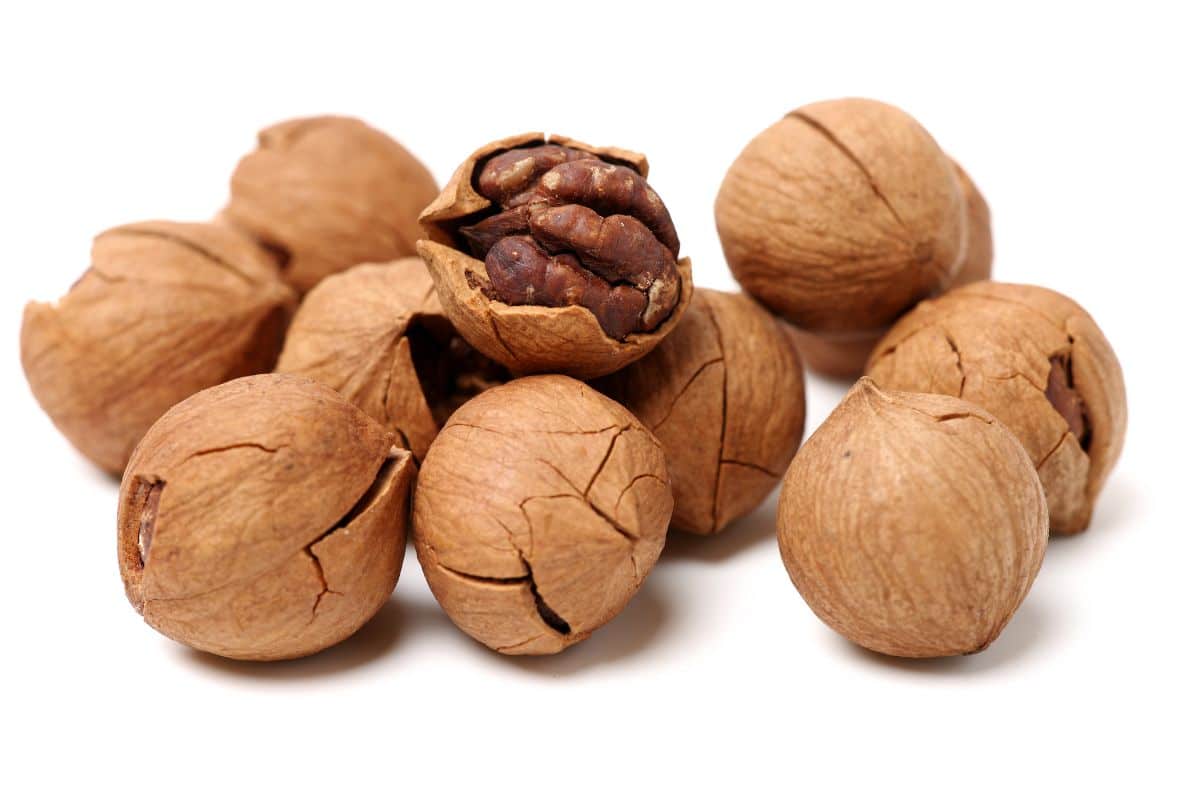
Hickory nuts come from the hickory tree, which is native to North America. Hickory nuts are medium-sized, ranging from 2 to 3 centimeters in length, and have a distinct, rich flavor that is often described as buttery and slightly sweet.
Hickory nuts can be eaten raw, roasted, or used in various recipes. They are often used in baked goods, desserts, and as an ingredient in stuffings or sauces.
Jack Nuts
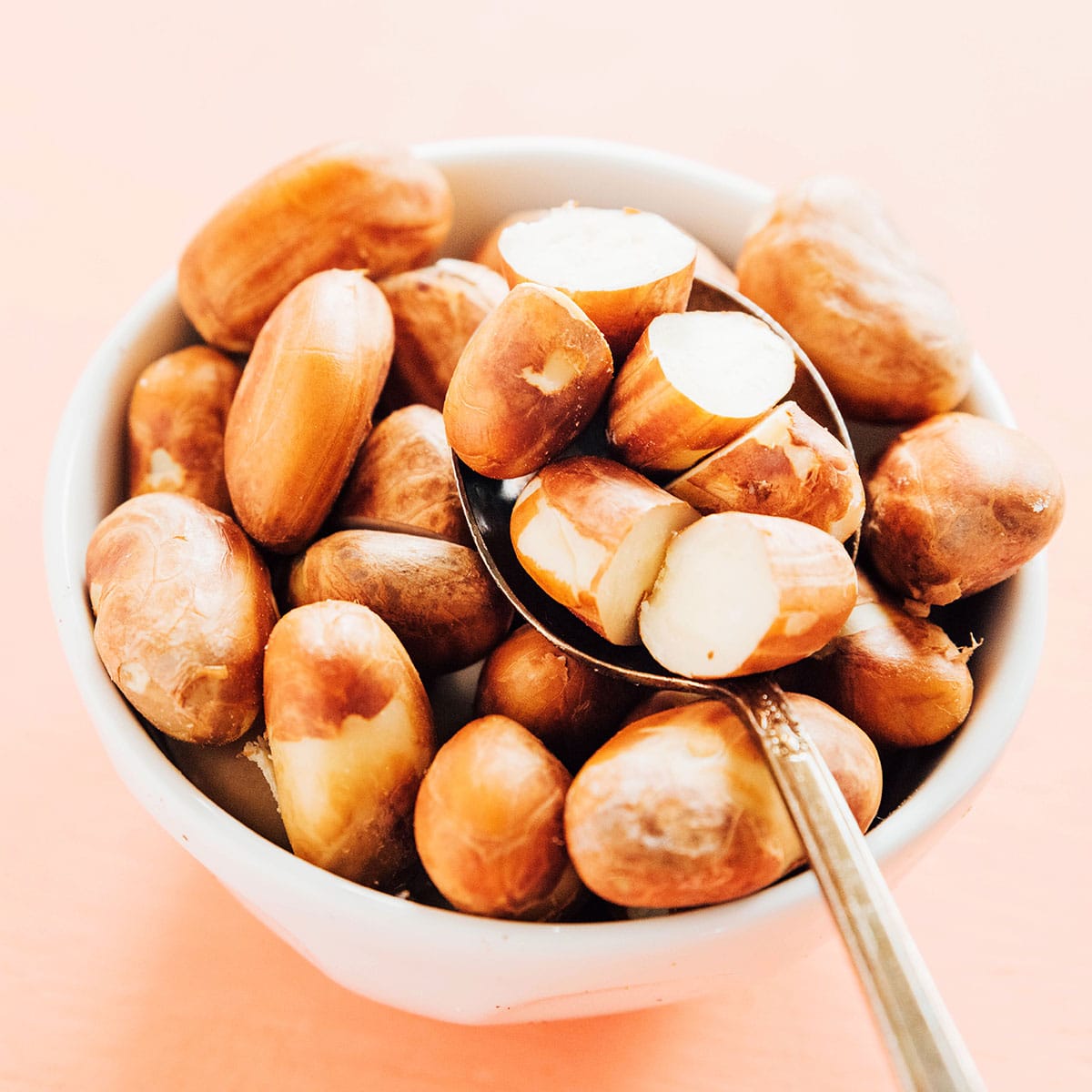
Jack Nuts are the seeds found within the jackfruit, a tropical fruit native to South Asia. As such, they aren’t technically nuts, but they are so similar to what we think of as nuts they had to be included. Jack Nuts are typically large, around 2 to 3 or more centimeters in length, and have a mild and nutty flavor similar to Brazil nuts.
Jack Nuts are often roasted, boiled, or used in various culinary preparations. They can be used as a substitute for chestnuts and are commonly added to curries, stews, or ground into flour for baking. Their flavor is said to be similar to roasted chestnuts.
Kola Nuts
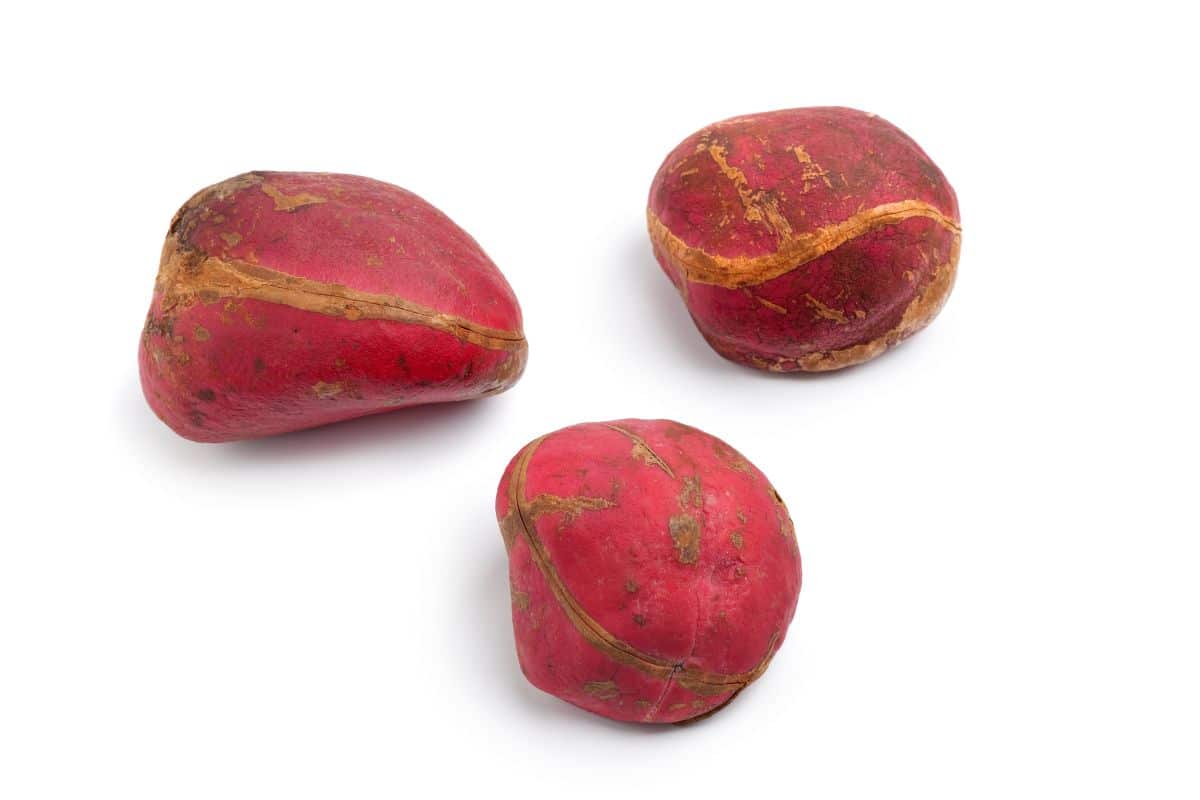
Kola nuts come from the kola tree, which is native to the tropical rainforests of West Africa. Kola nuts are relatively large, about 5 to 10 centimeters in length. They have a bitter taste and contain caffeine, which contributes to their stimulant properties.
Kola nuts are often chewed or used in the production of beverages, such as local cola drinks. They are also used in some cultural and ceremonial practices.
Kurrajong Nuts
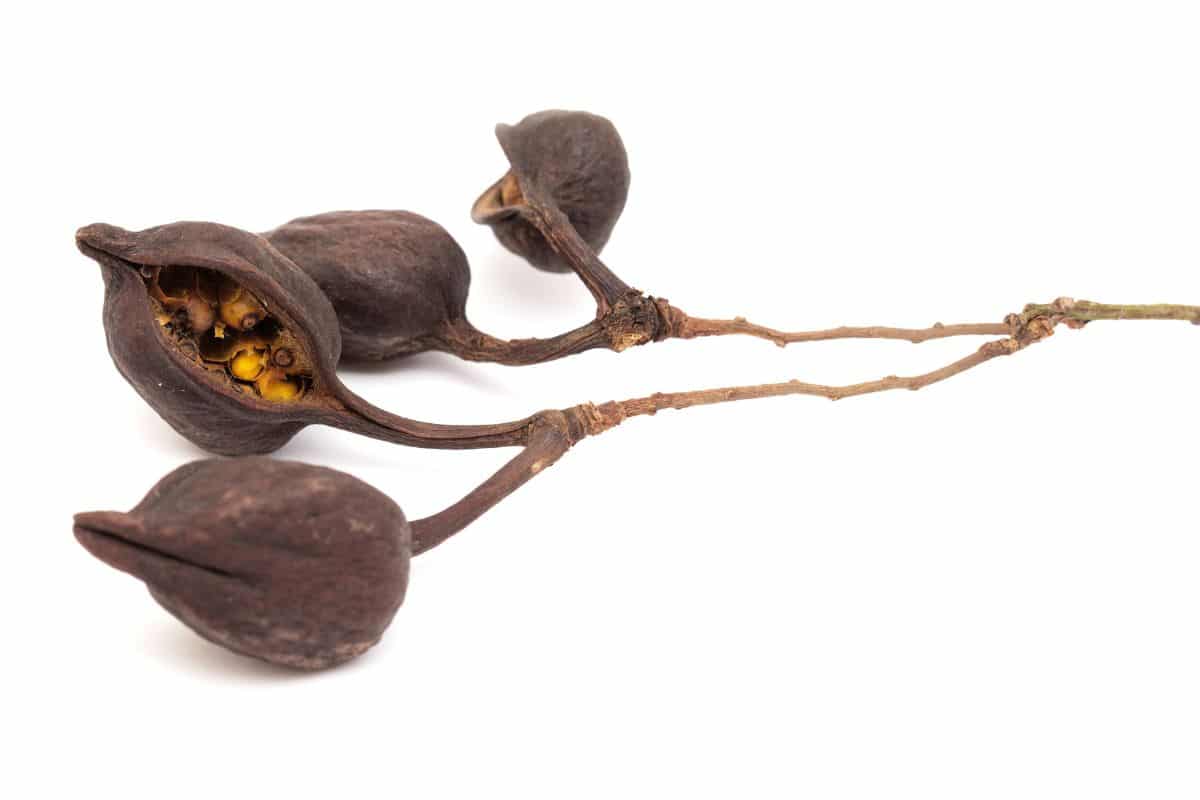
Kurrajong nuts come from the kurrajong tree, which is native to Australia. Kurrajong nuts are small, typically around 1 to 2 centimeters in length, and have a mild, slightly sweet flavor.
Kurrajong nuts can be eaten raw or roasted. They are often used in baking, added to cakes, bread, or used as a topping for desserts. Additionally, the seeds can be ground into flour for various culinary applications.
Lotus Nuts
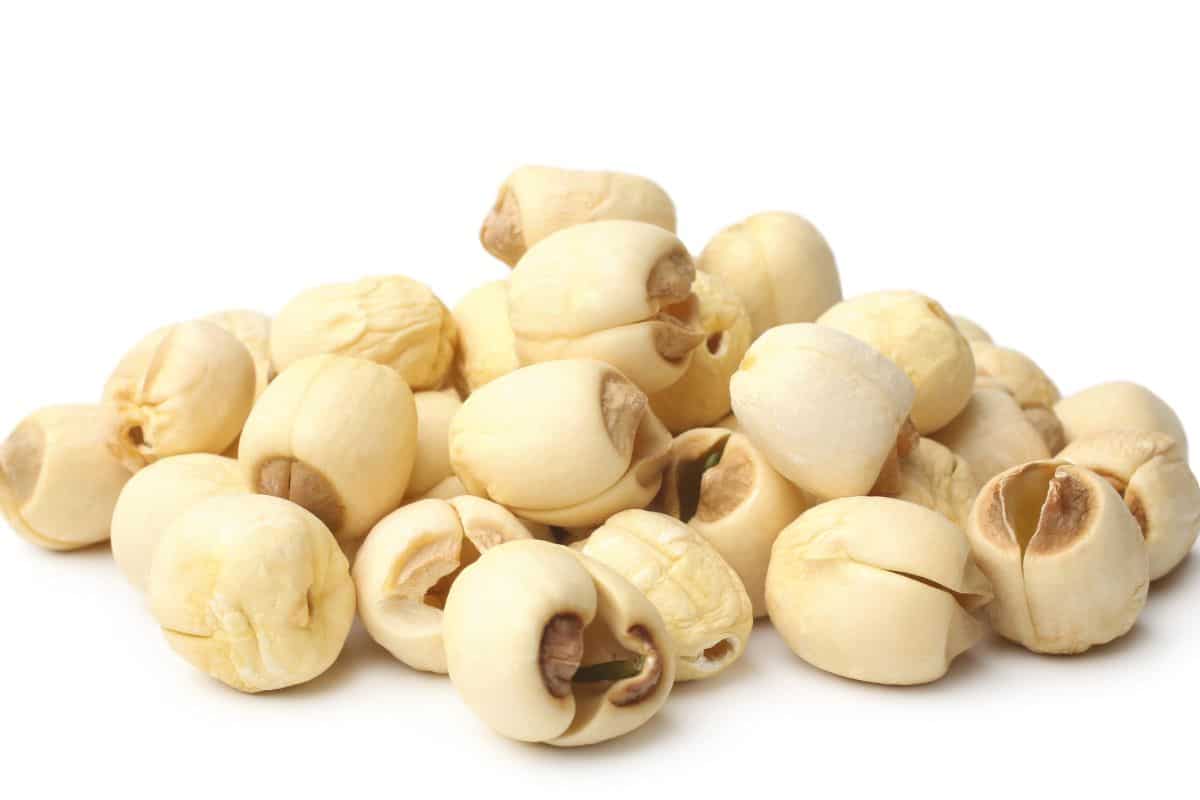
Lotus nuts, also called lotus seeds or makhana, are native to parts of Asia, including India and China. Lotus seeds are small, round, and flat, and have a mild, slightly sweet flavor.
Lotus seeds are commonly used in Asian cuisines, particularly in desserts and sweet soups. They can be roasted, fried, or boiled and added to dishes for texture and flavor.
Macadamia Nuts
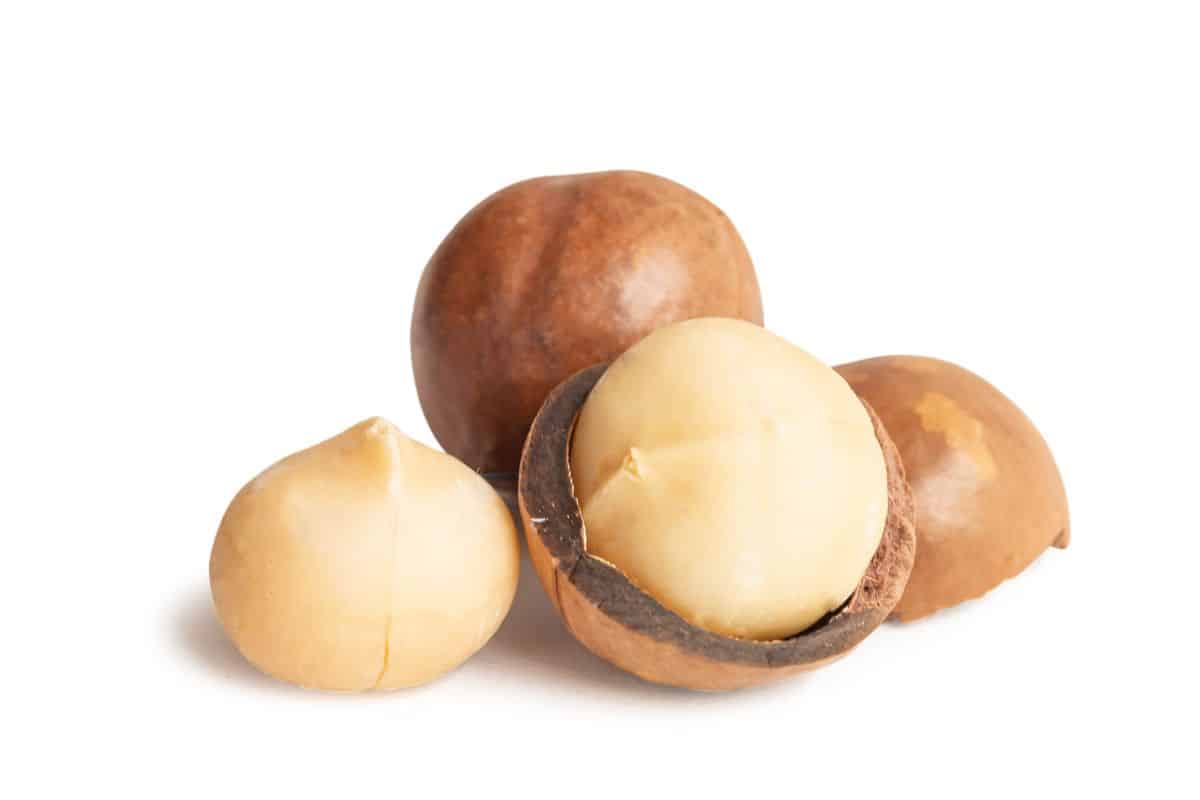
Macadamia nuts are native to Australia, specifically Queensland and New South Wales. They are sometimes called Queensland nuts or bush nuts and are relatively large. Macadamia nuts have a rich, creamy, and buttery flavor.
Macadamia nuts are often enjoyed as a snack or used in baking, such as in cookies, cakes, or as a topping for desserts. They can also be roasted and added to savory dishes or used to make nut butter. They are typically one of the more expensive varieties of nuts.
Malabar Chestnut
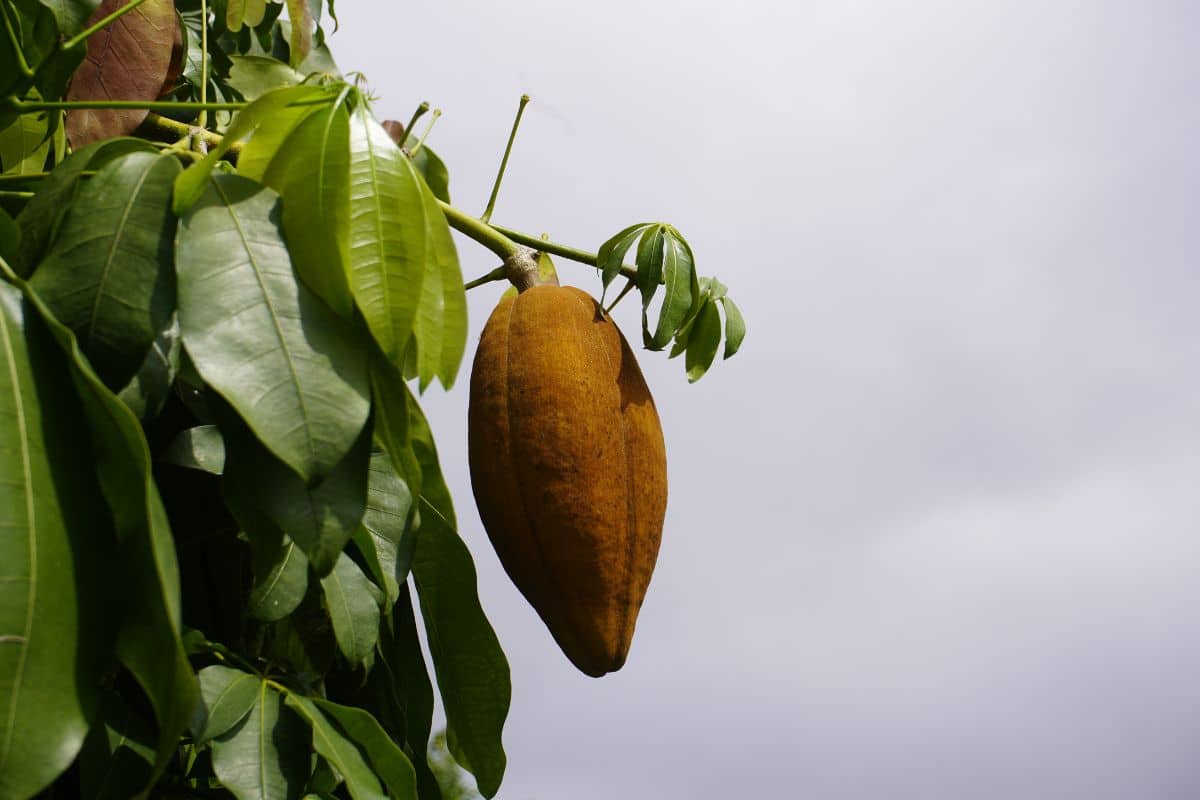
The Malabar Chestnut, also known as the Guiana chestnut, is native to Central and South America. The nuts are typically medium-sized and have a similar appearance to chestnuts. Malabar chestnuts have a mild, slightly sweet flavor said to be similar to peanuts.
The nuts can be roasted or boiled and used in both sweet and savory dishes, and even drinks. They are also commonly used in stir-fries, soups, and curries, or as an ingredient in salads.
Marcona Almond
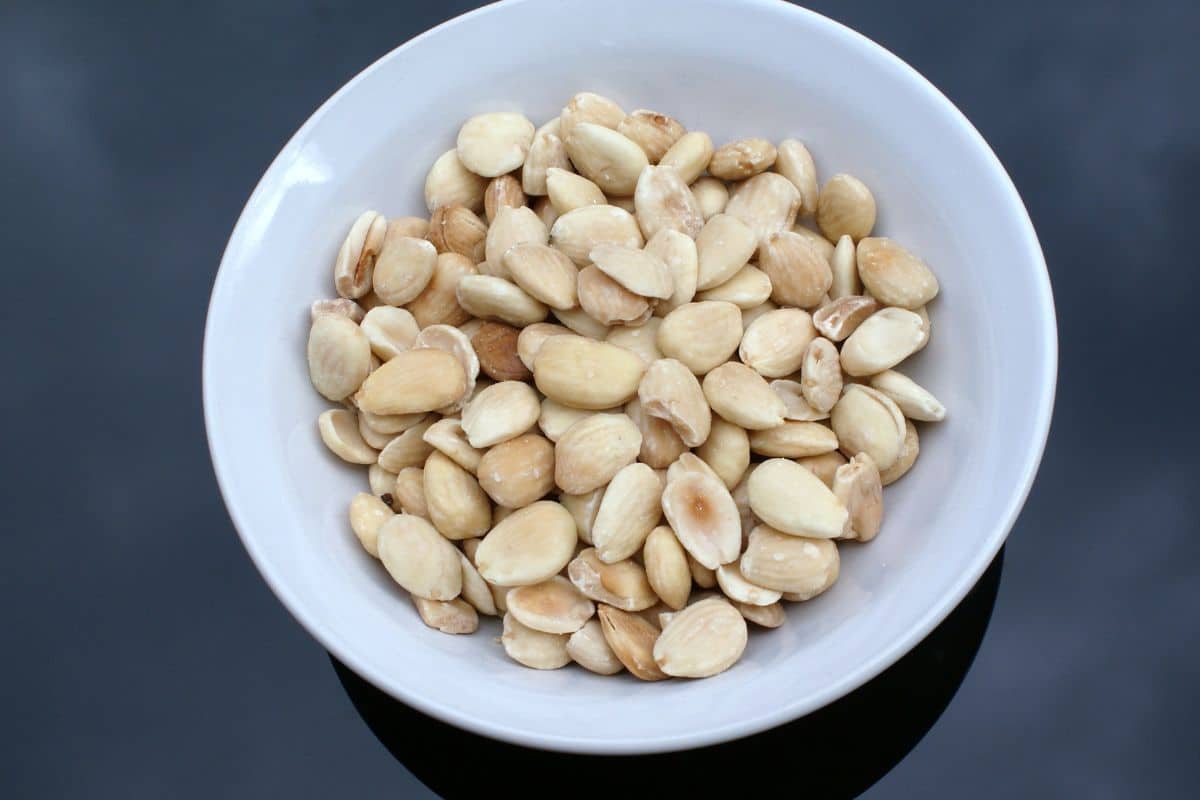
Marcona almonds are native to Spain, and are typically small to medium in size and have a plump, oval shape. They have a delicate, sweet, and buttery flavor.
Marcona almonds are highly regarded for their flavor and are often enjoyed as a snack on their own. They are also used in various culinary preparations, such as in desserts, pastries, or as a garnish for salads or main dishes.
Mission Almond

Mission almonds are primarily grown in California, and are medium-sized with a slightly elongated shape like other almonds. They also have the rich, nutty flavor we associate with most almonds.
Mission almonds are versatile and can be used in both sweet and savory dishes. They are often used in baking, confectionery, or as a topping for salads and main dishes. They can also be ground into almond flour.
Mongongo Nuts
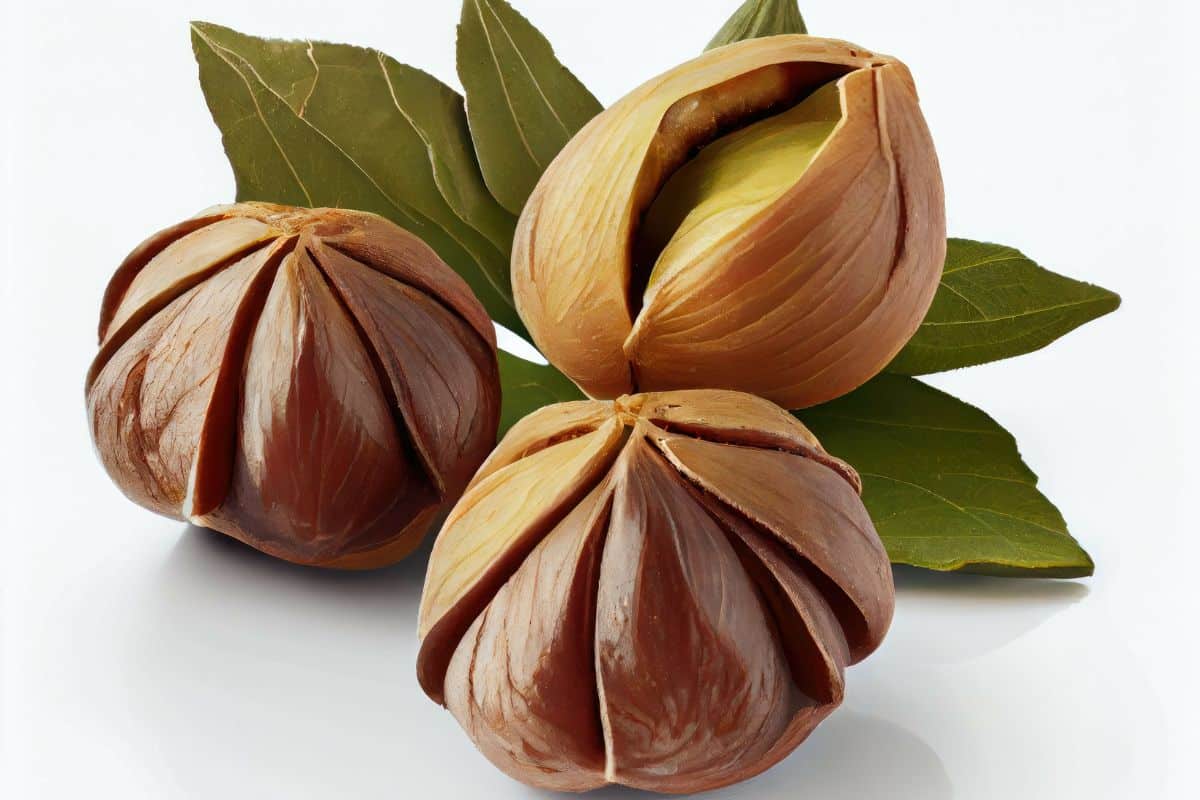
Mongongo nuts come from the mongongo tree, which is native to southern Africa. They are also known as manketti nuts or butter nuts. Mongongo nuts are small to medium-sized and have a hard, woody shell. Their flavor is a rather unique nutty taste.
Mongongo nuts are traditionally used in African cuisine. They can be eaten raw, roasted, or ground into a paste. They are often used in stews, porridges, or as a snack.
Monkey Puzzle Nut
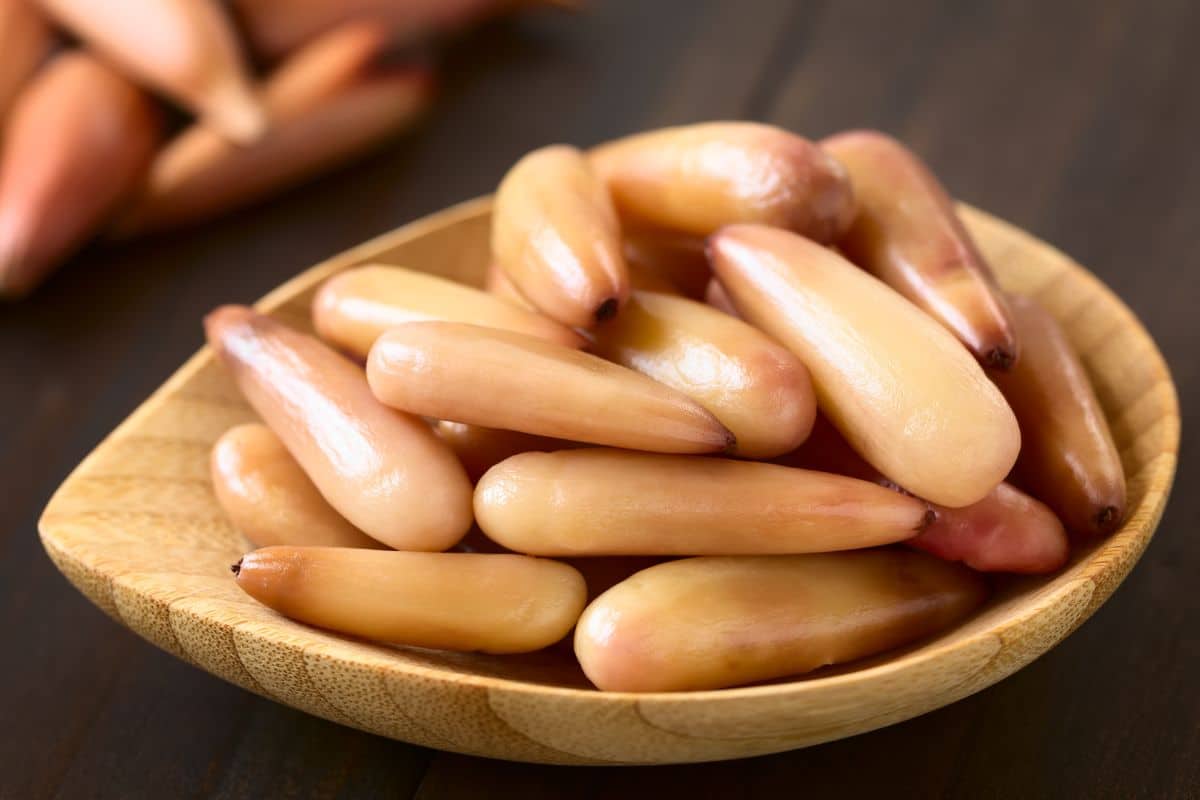
The monkey puzzle nut comes from the monkey puzzle tree, which is native to the Andes Mountains in South America. They are large and have a unique, geometric shape with hard, spiky shells. The flavor of monkey puzzle nuts is often described as mild and similar to pine nuts.
Monkey puzzle nuts are not as widely used in culinary applications as some other nuts. They can, however, be eaten raw or roasted, and their kernels can be used in baking or added to salads for texture and flavor. The nuts are also occasionally used in traditional dishes in some South American countries.
Oysternut
The oysternut is native to Tanzania and Uganda. Oysternuts are a round flat nut that resembles an oyster. They are typically 2 to 3 centimeters in diameter, and have in recent years been eaten less and less by the locals.
Oysternuts are often a high protein nut often eaten raw, roasted and salted. They can also be used in baking or as an ingredient in savory dishes.
Padre Almond
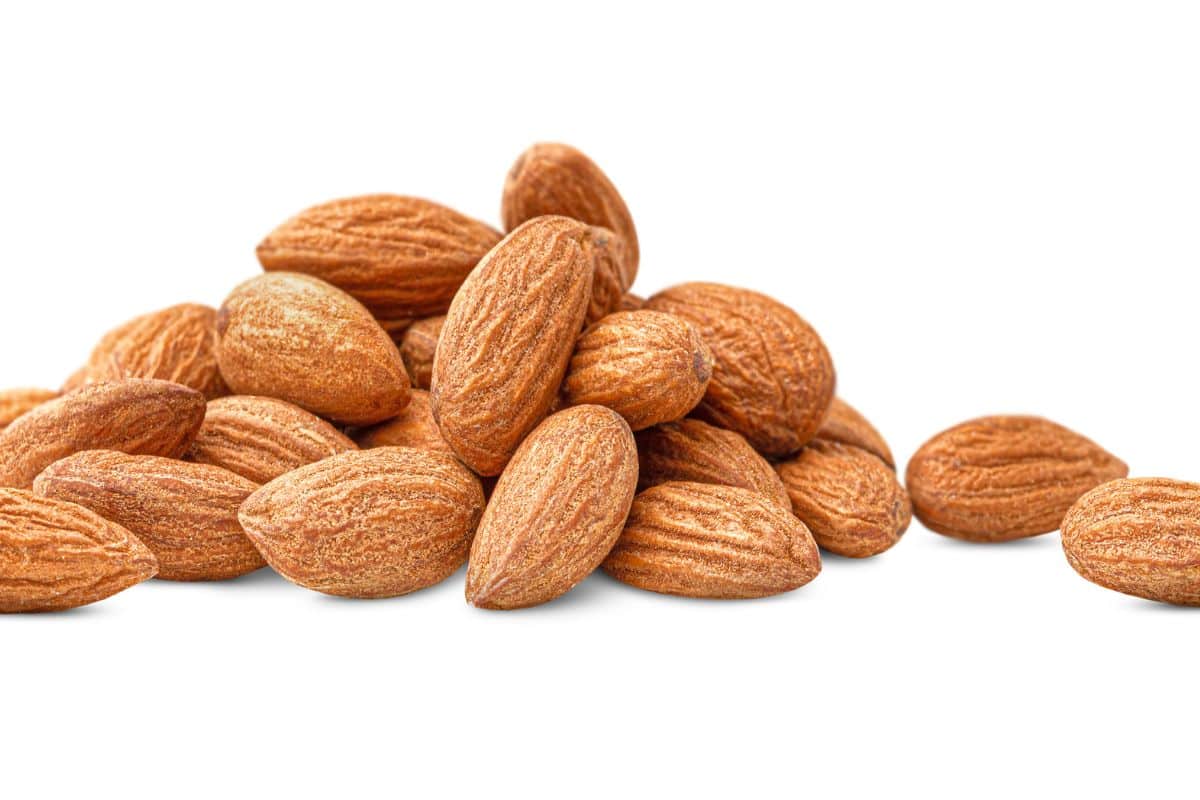
The padre almond, also known as the orgeat almond, is an almond variety native to the Mediterranean region. Padre almonds are similar in size to other varieties of almonds. They typically measure around 1 to 1.5 centimeters in length, and have a mild, sweet flavor with a hint of bitterness.
Padre almonds are commonly used in baking, confectionery, and as a topping for desserts. They are also used to produce almond milk, almond butter, and almond oil. In some Mediterranean cuisines, padre almonds are used in savory dishes like stews and salads.
Palm Nuts
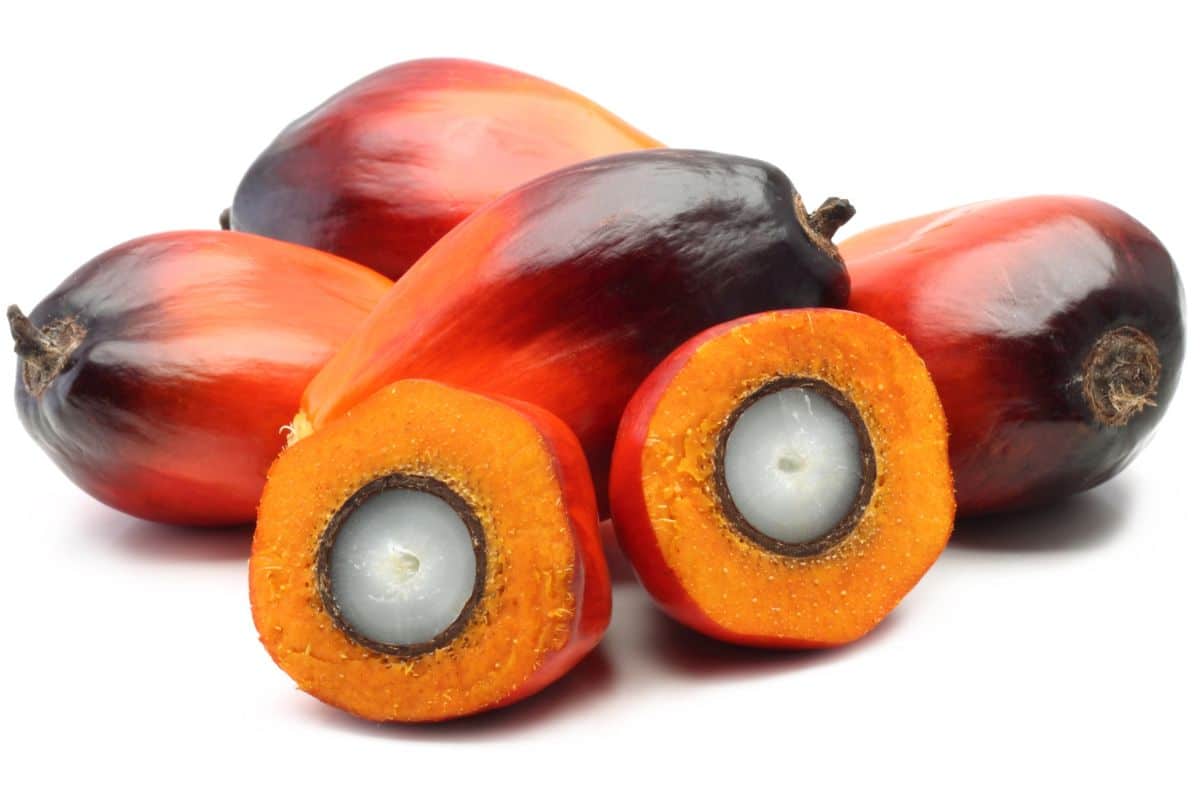
Palm nuts refer to the seeds of various species of palms, which are native to tropical regions worldwide. The size of palm nuts can vary depending on the specific palm species. They are typically small, ranging from 1 to 2 centimeters in diameter. Palm nuts have a rich, nutty flavor with a slightly sweet taste.
Palm nuts are commonly used in African and Southeast Asian cuisines. They are also processed to extract palm oil, which is used for cooking and as an ingredient in various dishes. In West Africa, palm nut soup is a popular culinary preparation that uses the nuts as a key ingredient.
Paradise Nut
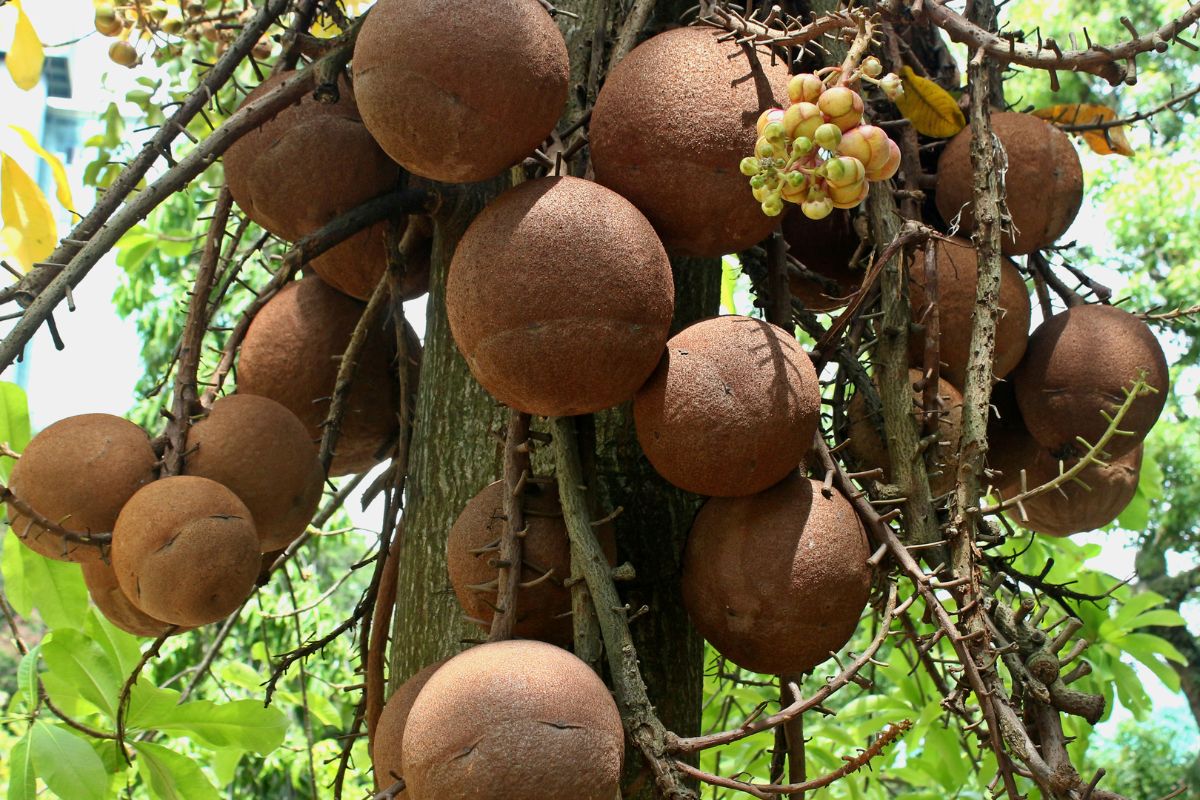
The paradise nut, also known as the sapucaia nut, is native to the Amazon rainforest in South America. Paradise nuts are large and can measure up to 10 cm (4 inches) in diameter. They are known for their creamy, nutty flavor with a texture similar to chestnuts.
Paradise nuts are often roasted and eaten as a snack. They can also be used in desserts, confectionery, and baked goods. In some traditional Amazonian cuisines, the nuts are used in savory dishes such as stews or as a filling for empanadas.
Peanuts

Peanuts, also known as groundnuts or goobers, are native to South America, specifically to the regions comprising Bolivia and Brazil. They are not technically nuts but legumes. We eat them, however, more like nuts, so we include them here as well as the four most popular varieties of peanuts.
Peanuts are incredibly versatile and widely used in various culinary preparations. They can be roasted and enjoyed as a snack, used as an ingredient in peanut butter, added to baked goods, or used in savory dishes like stir-fries and satay sauces. Peanuts are also commonly used in confectionery, such as peanut brittle or nougat. Peanut oil, extracted from the nuts, is often used in cooking and frying due to its high smoke point.
Pecans
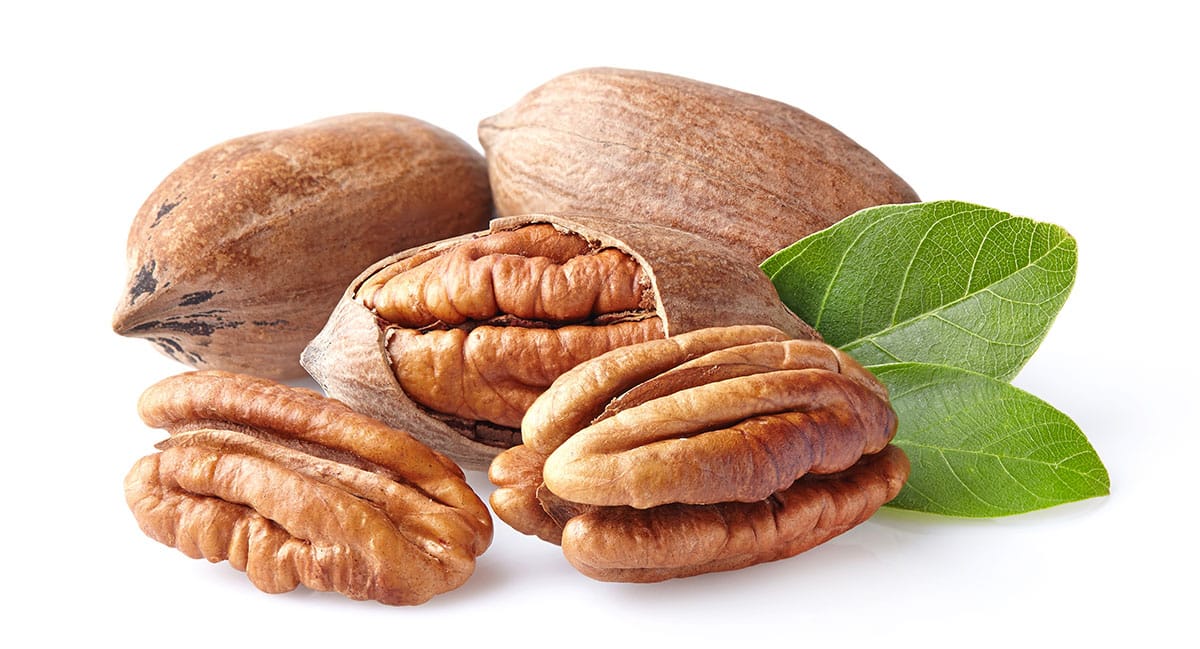
Pecans are native to North America, particularly the southern United States and Mexico. Pecans are medium-sized nuts, typically around 1 inch long, and have a rich, buttery flavor and a slightly sweet taste
Pecans are commonly used in baking, particularly in recipes like pecan pies, cookies, and cakes. They are also enjoyed as a snack on their own or used in savory dishes like salads and roasted vegetables. There are numerous types of pecans you can choose from to support your culinary aspirations. Our favorite use for Pecans is hands down this Sweet Potato Casserole.
Peerless Almond
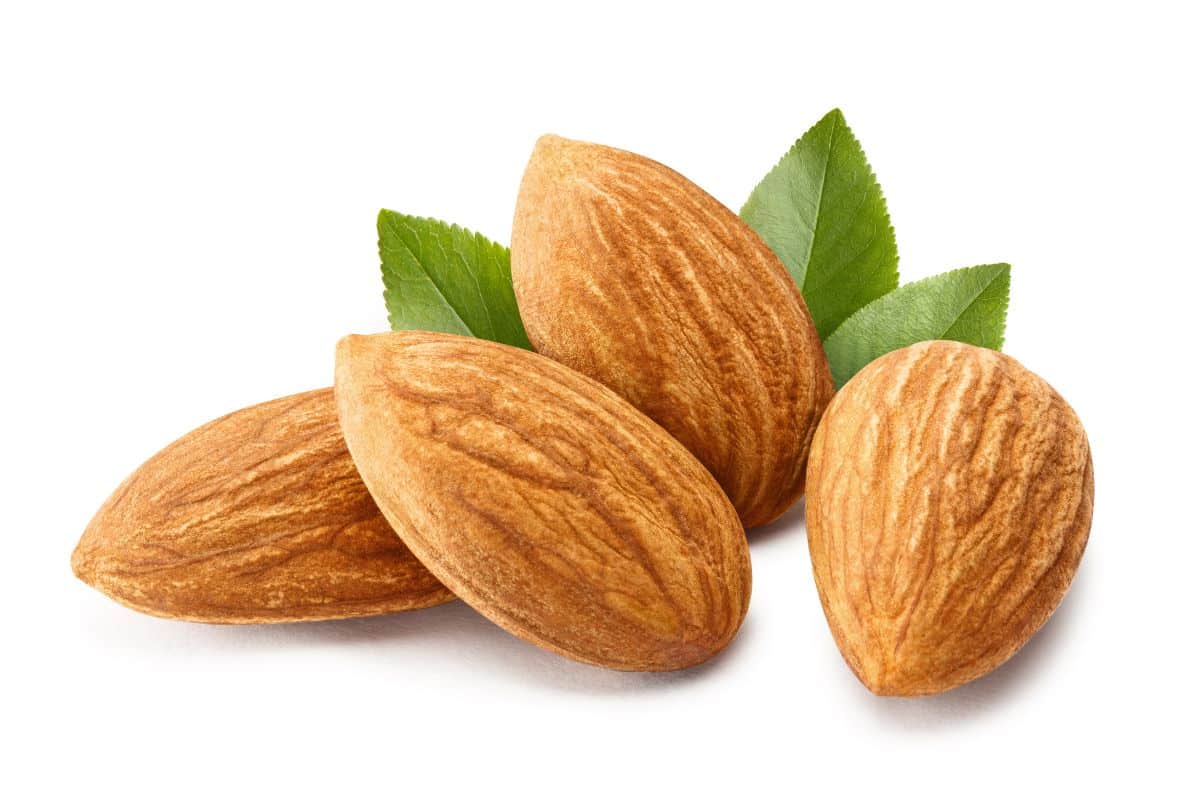
The peerless almond, also known as the sweet almond, is a common almond variety that is cultivated worldwide. Peerless almonds are similar in size and shape to other almond varieties. They typically measure around 1 to 1.5 centimeters in length, and have a mild, sweet flavor with a slightly buttery taste.
Peerless almonds are widely used in baking, confectionery, and as a topping for desserts. They are commonly used to make almond flour, almond paste, marzipan, and almond milk. Peerless almonds are also often enjoyed as a snack on their own or added to trail mixes.
Pignoli Nuts
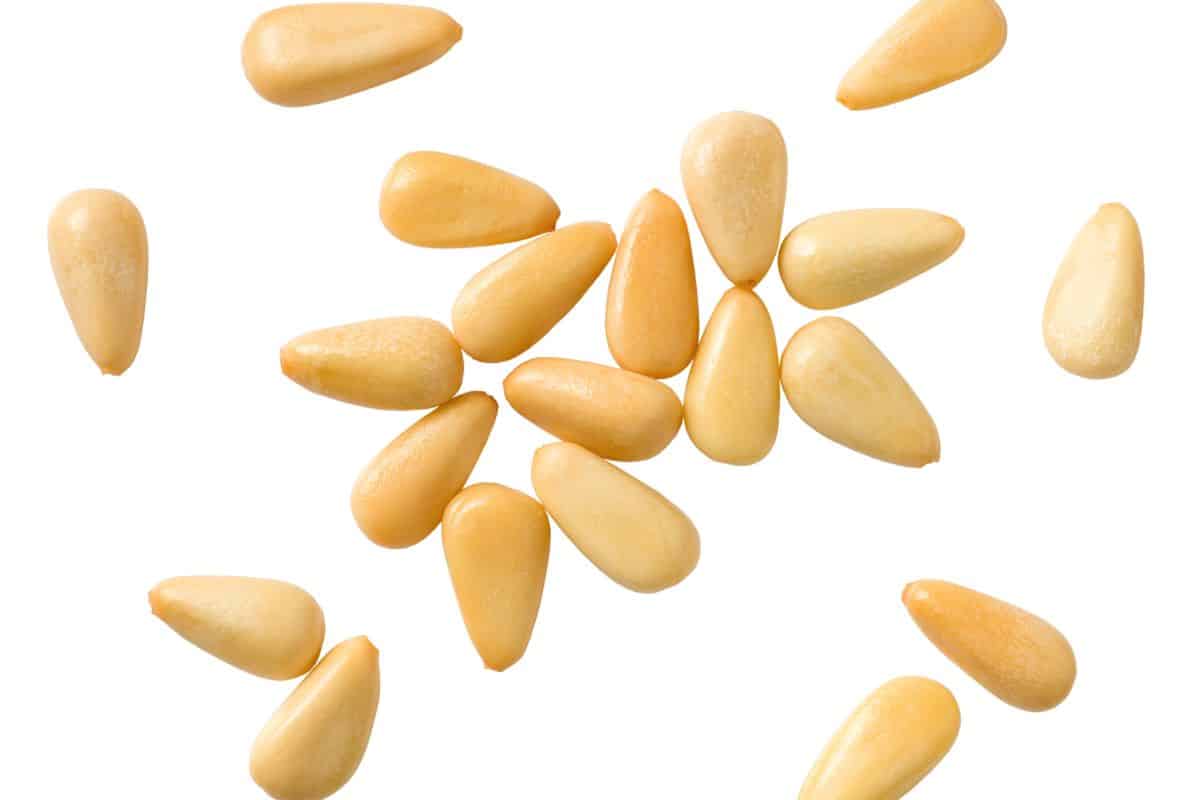
Pignoli nuts are a variety of pine nuts harvested primarily from stone pines native to the Mediterranean region. Italy is particularly renowned for its production of pignoli nuts, where they are widely used in Italian cuisine.
Pignoli nuts have a delicate, buttery flavor with a slightly sweet and resinous taste. They have a creamy textureoften described as mild and nutty with hints of pine.
Pili Nut
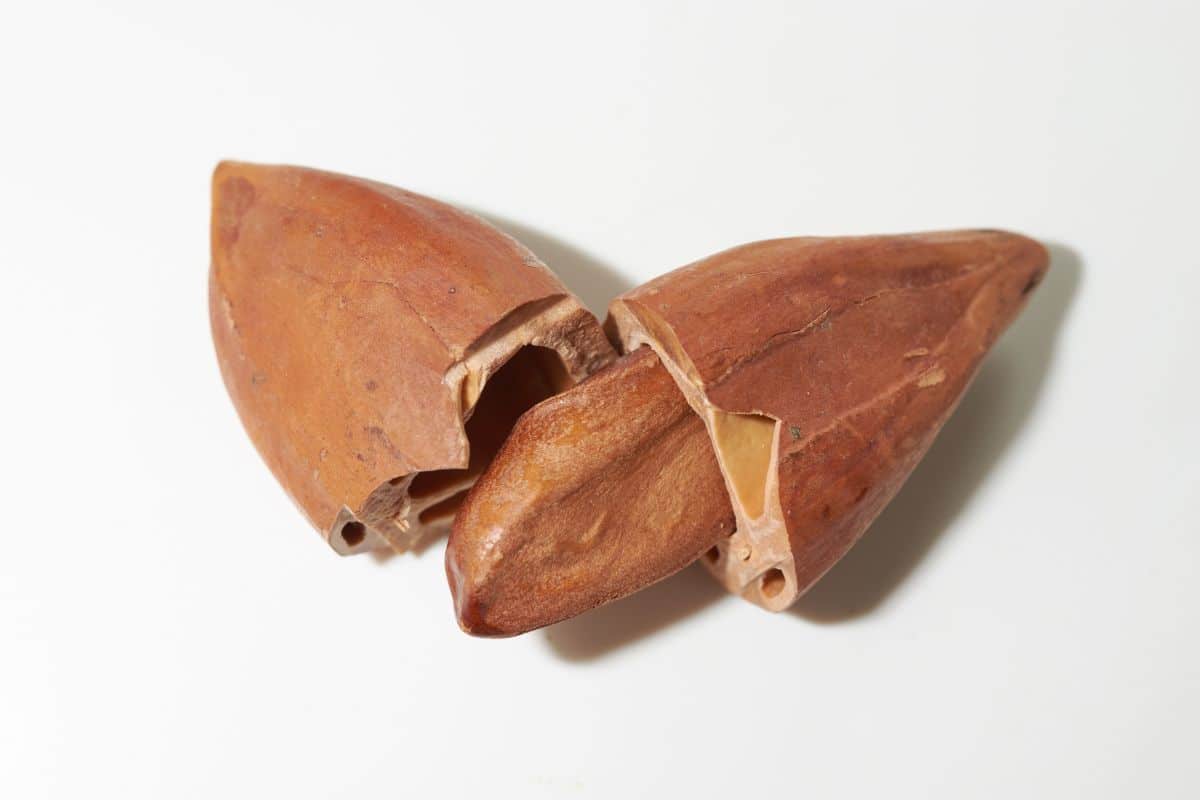
Pili nuts come from the pili tree which is native to Southeast Asia, particularly the Philippines. They are also known as canarium nuts or Manila nuts, and are relatively large, typically around 1-2 inches long. Pili nuts have a mild, buttery flavor with a slightly sweet undertone.
Pili nuts are often eaten raw or roasted as a snack. They can also be used in baking, added to desserts, or incorporated into savory dishes such as stir-fries and curries.
Pine Nuts
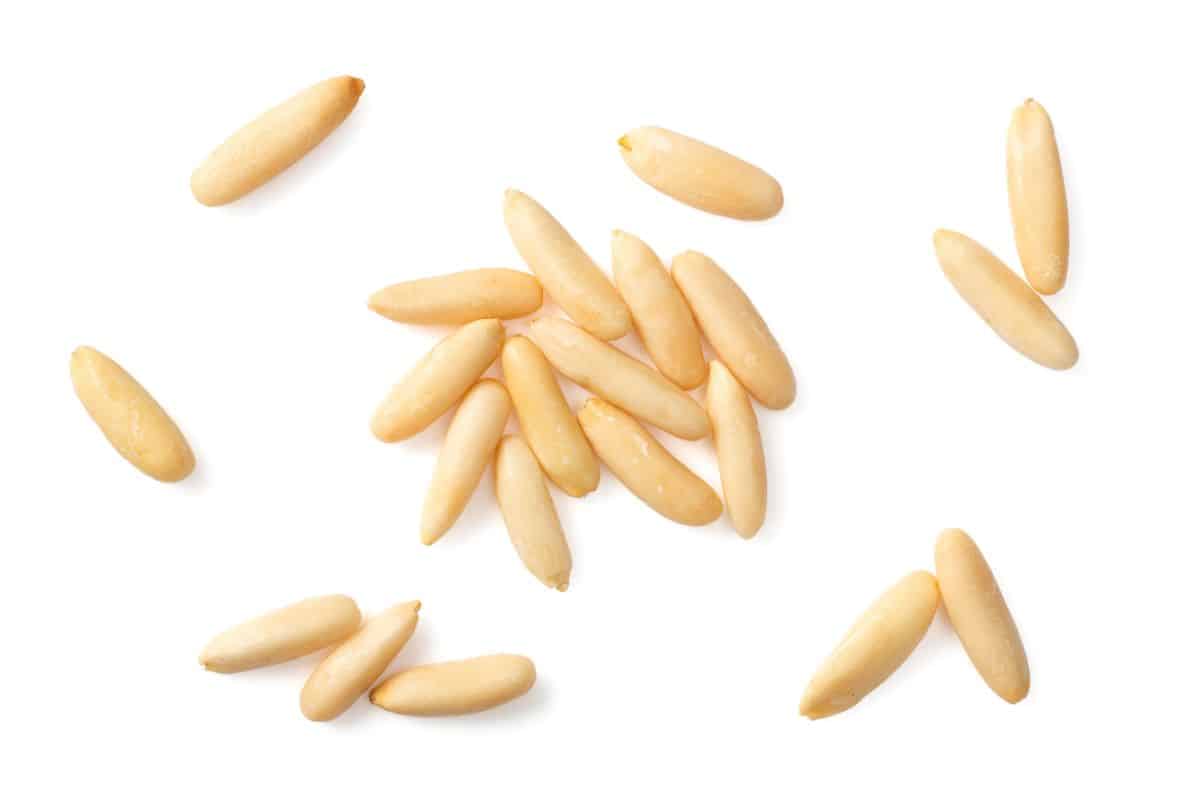
Pine nuts are the edible seeds of pine trees and are harvested from various pine species worldwide. They are also sometimes referred to as pignoli or pinon nuts. Pine nuts are small and elongated, typically measuring around 1/2 inch long, and have a delicate, buttery flavor with a slightly resinous and sweet taste.
Pine nuts are commonly used in Mediterranean and Middle Eastern cuisines. They are a key ingredient in dishes like pesto, salads, pasta dishes, and baked goods. Pine nuts are also enjoyed as a dessert topping, and used in stuffing recipes. We think that Homemade Pesto is, arguably, the best use of these little gems.
Pistachios
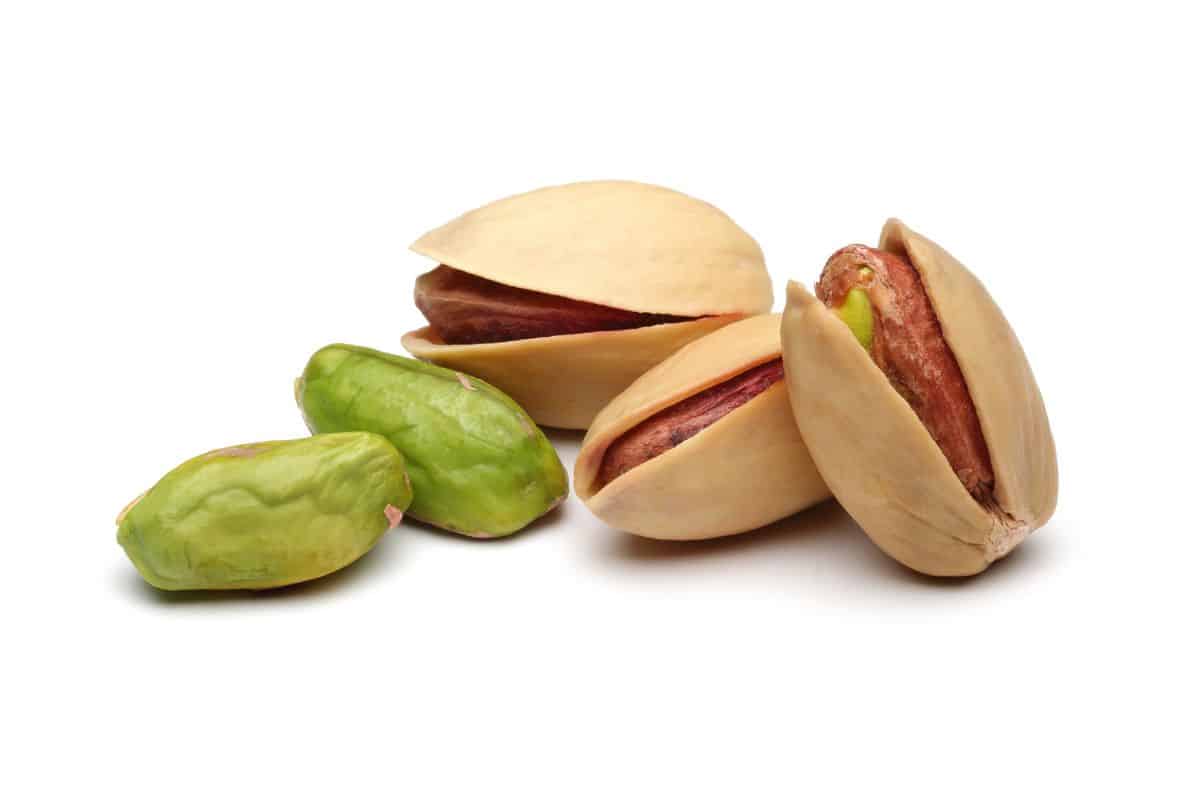
Pistachios are native to the Middle East, particularly Iran and Iraq. They are now grown in several other countries worldwide, including the United States. Pistachios are small, typically measuring about 1cm (1/2 inch) long, and have a unique flavor that is mildly sweet and slightly savory. They have a distinct earthy and nutty taste.
Pistachios are enjoyed as a snack on their own, and many of us find it hard to stop eating them once we start. They are also commonly used in both sweet and savory dishes. They are used in baking, ice creams, confections, and desserts. Pistachios are also used in Mediterranean and Middle Eastern cuisines, added to salads, pilafs, and meat dishes. For something unique and decadent try these simple Grape and Pistachio Cheese Balls a try.
Red Bopple Nut
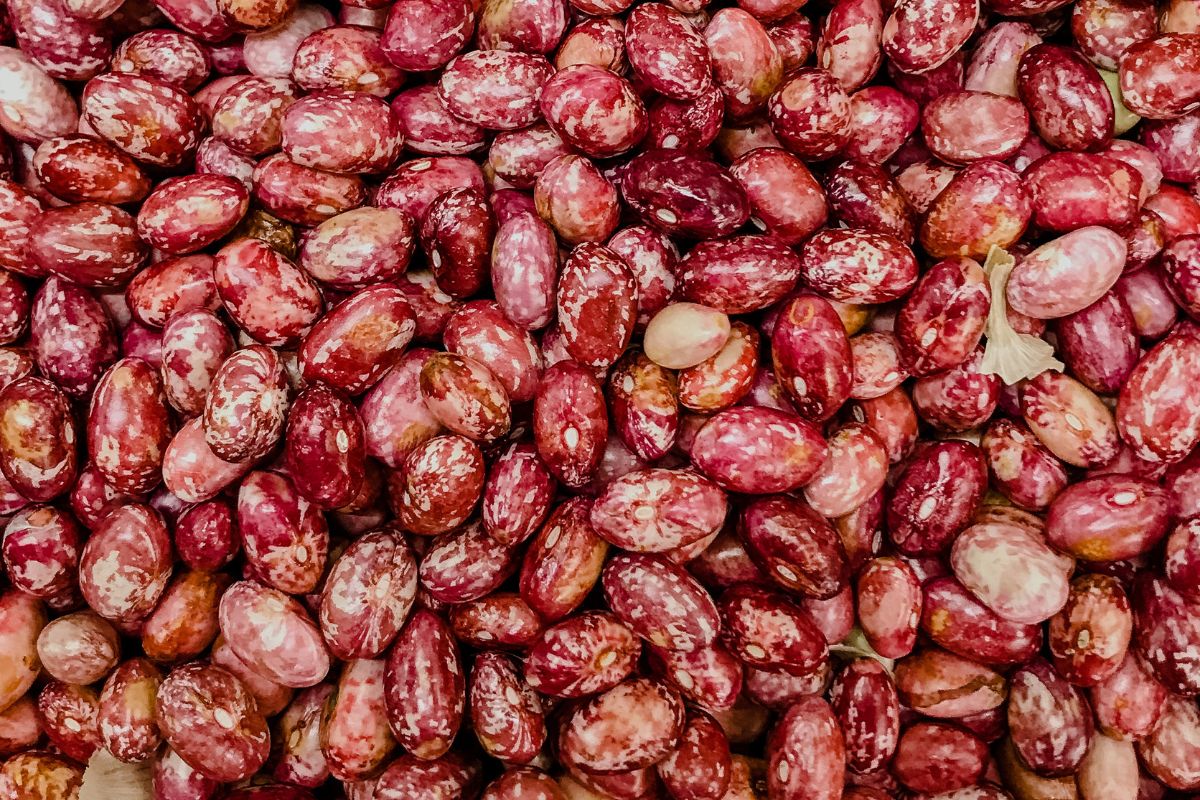
The Red bopple nut, also known as red nut or ivory silky oak, is a relative of the macadamia nut, and is native to Australia. Red Bopple Nuts are typically round and about 1 cm in diameter, and have a rich, buttery flavor with a slightly sweet taste.
Red Bopple Nuts are commonly used in both sweet and savory dishes. They can be eaten raw, roasted, or used in baking, desserts, salads, and as a topping for various dishes. They are also commonly processed into macadamia nut butter or oil.
Runner Peanut
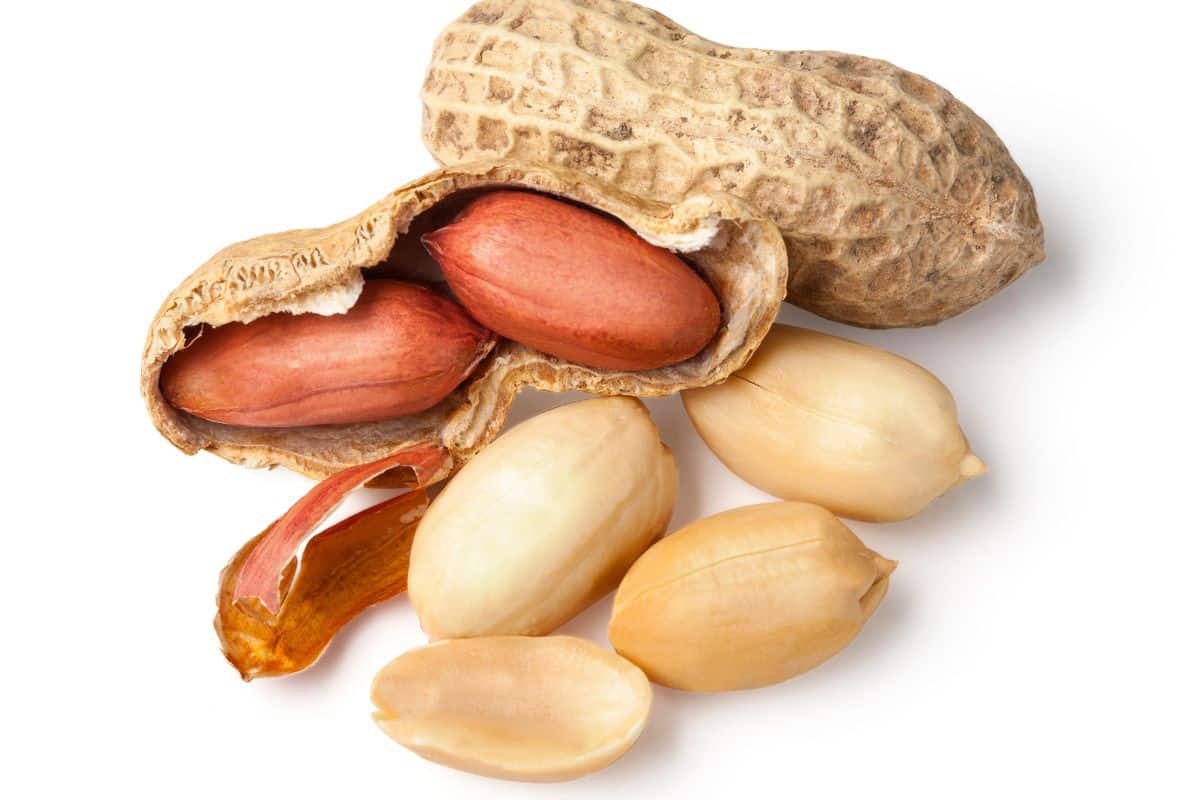
The runner peanut is believed to have originated in South America, particularly in the region encompassing Bolivia, Argentina, and Paraguay. Runner peanuts are medium-sized, with a length of about 2-4 cm (in their shell). They have a slightly sweet and nutty flavor with a crunchy texture. Over 80% of the peanuts grown in the U.S. are runners.
Runners are the most commonly used peanuts in peanut butter, but also widely used in various culinary applications. They are often roasted and salted for snacking purposes, added to candies, baked goods, trail mixes, and used in Asian and African cuisine.
Saba Nuts
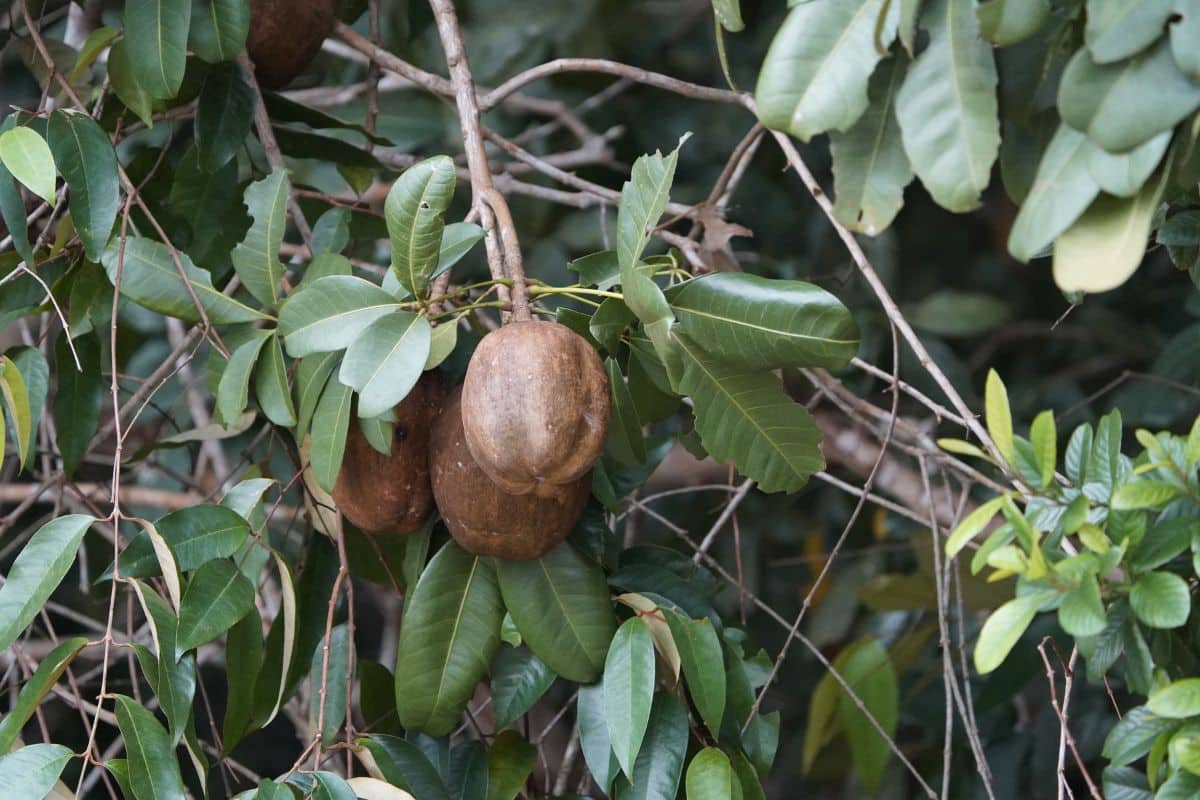
Saba Nuts, also known as sapucaia nuts, come from the sapucaia tree, which is native to the Amazon rainforest in Brazil. Saba nuts are large and irregularly shaped, measuring about 3-4 cm in length. They have a creamy and slightly sweet flavor.
Saba Nuts are commonly eaten roasted and salted as a snack. They can also be used in desserts, added to granola or muesli, or used as a topping for salads. In Brazil, the nuts are sometimes ground into a paste to make a traditional dessert called “doce de sapucaia.”
Spanish Peanut
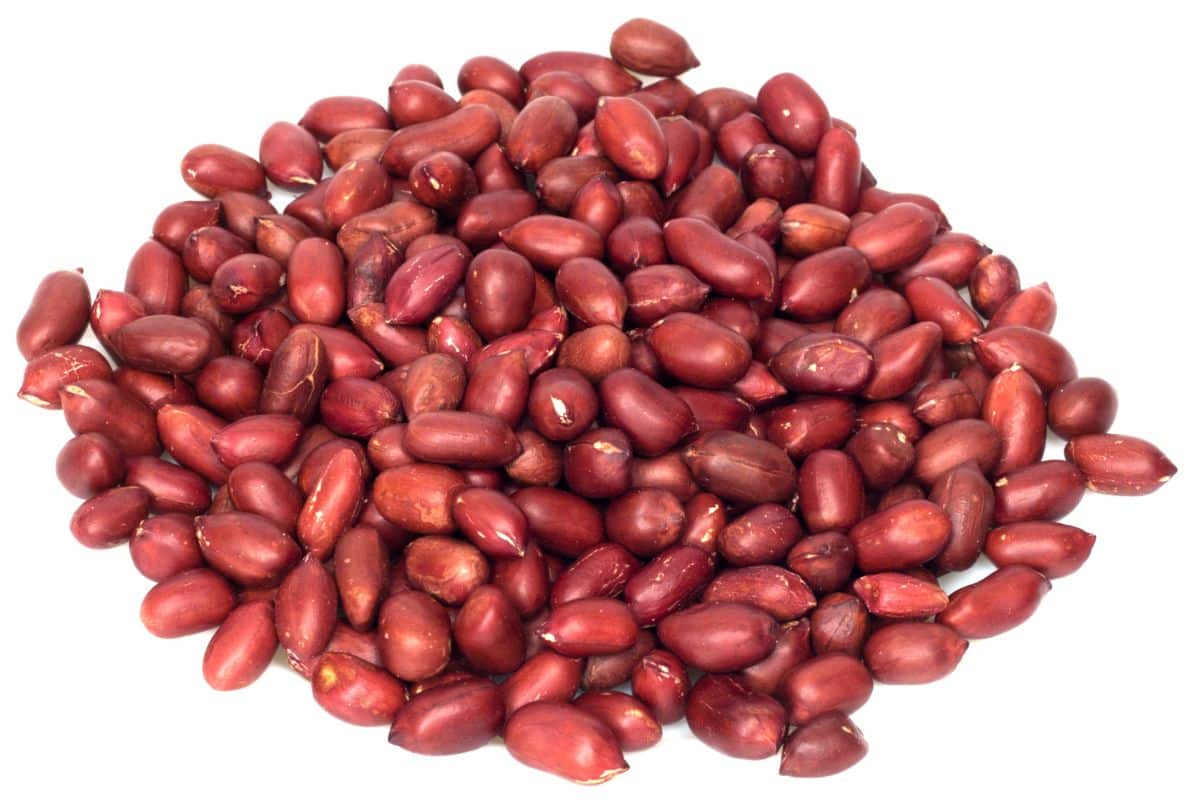
The Spanish peanut is believed to have originated in South America, specifically in the region of Brazil and Argentina, but are today grown in Texas, Oklahoma, and New Mexico. They are a bit smaller than other peanut varieties, and have a unique red skin but classic peanut nutty flavor.
Spanish Peanuts are often roasted and salted for snacking purposes. They are also used in peanut brittle, candies, trail mixes, and as an ingredient in some Asian and African dishes. Spanish Peanuts are also commonly used to make peanut oil.
Tiger Nuts
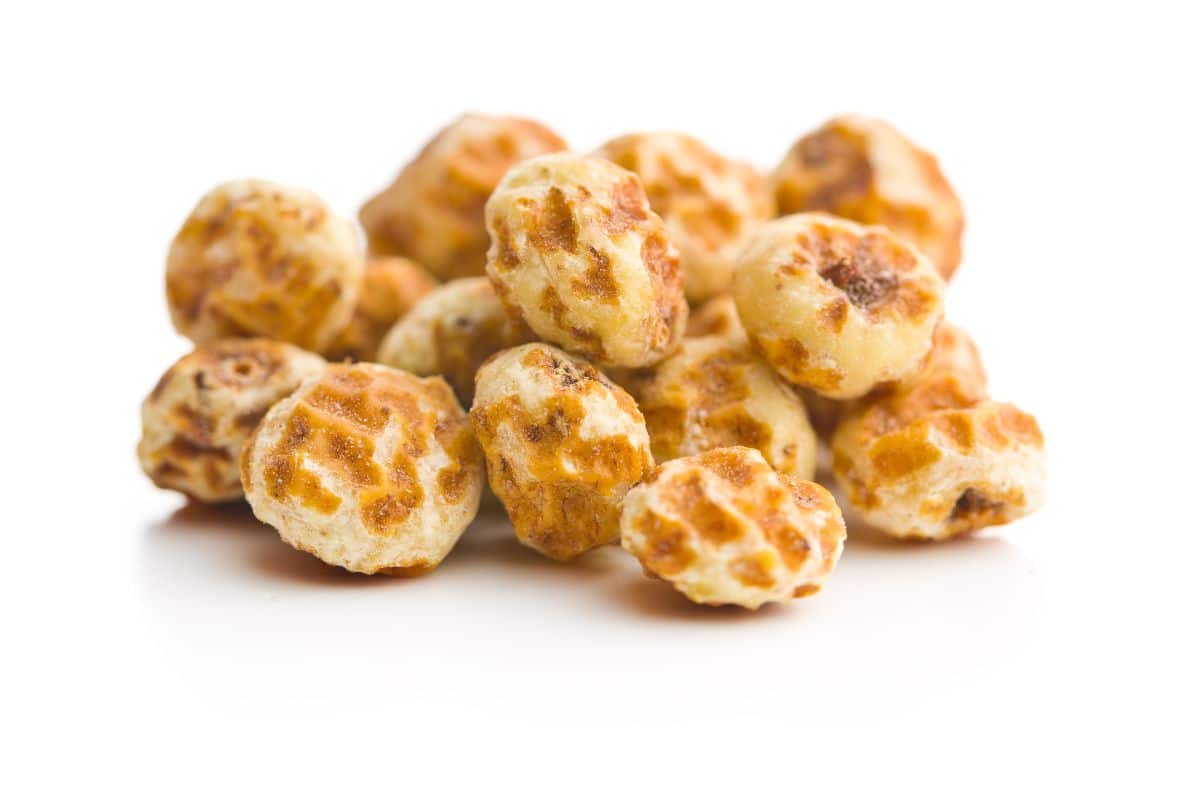
Tiger Nuts, also known as chufa nuts or earth almonds, are not actually nuts but rather small tubers or root vegetables. They have been cultivated in Egypt and other parts of North Africa for thousands of years. Tiger nuts are small, approximately 1-2 cm in length, and have a sweet and nutty flavor with a slight coconut-like taste.
Tiger nuts are used in a variety of culinary ways. They can be eaten raw, roasted, or ground into flour. They are often used to make a traditional Spanish beverage called “horchata de chufa,” which is a sweet, milky drink. Tiger nut flour is also used in baking, particularly in gluten-free recipes, and they can be added to salads, smoothies, and desserts.
Valencia Peanut
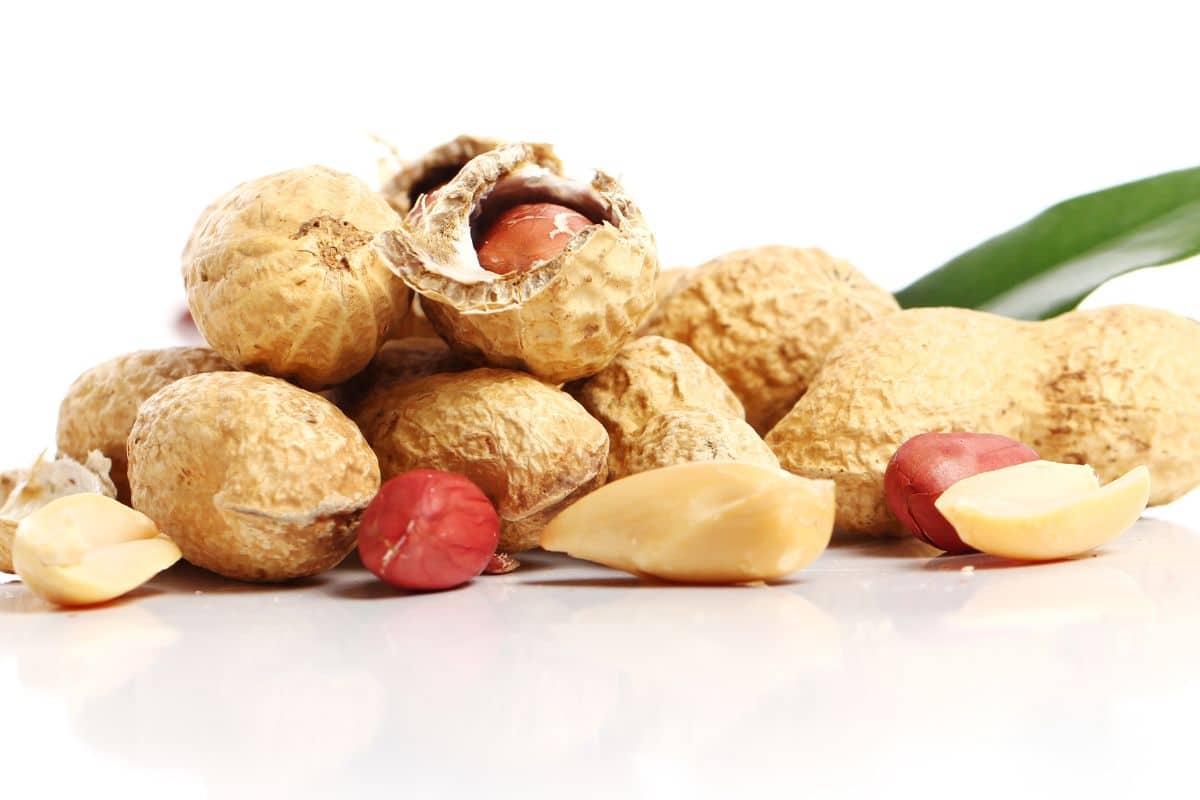
Valencia peanuts are believed to have originated in the Valencia region of Spain. Valencia peanuts are medium-sized compared to other peanut varieties, and generally have three or more kernels. They have the typical peanut sweet and slightly nutty flavor.
Valentia only make up about 1% of total US peanut production, and are commonly used in all-natural peanut butter, as boiled peanuts, roasted peanuts, and various confections. They are also a popular choice for garnishing salads and desserts.
Virginia Peanut
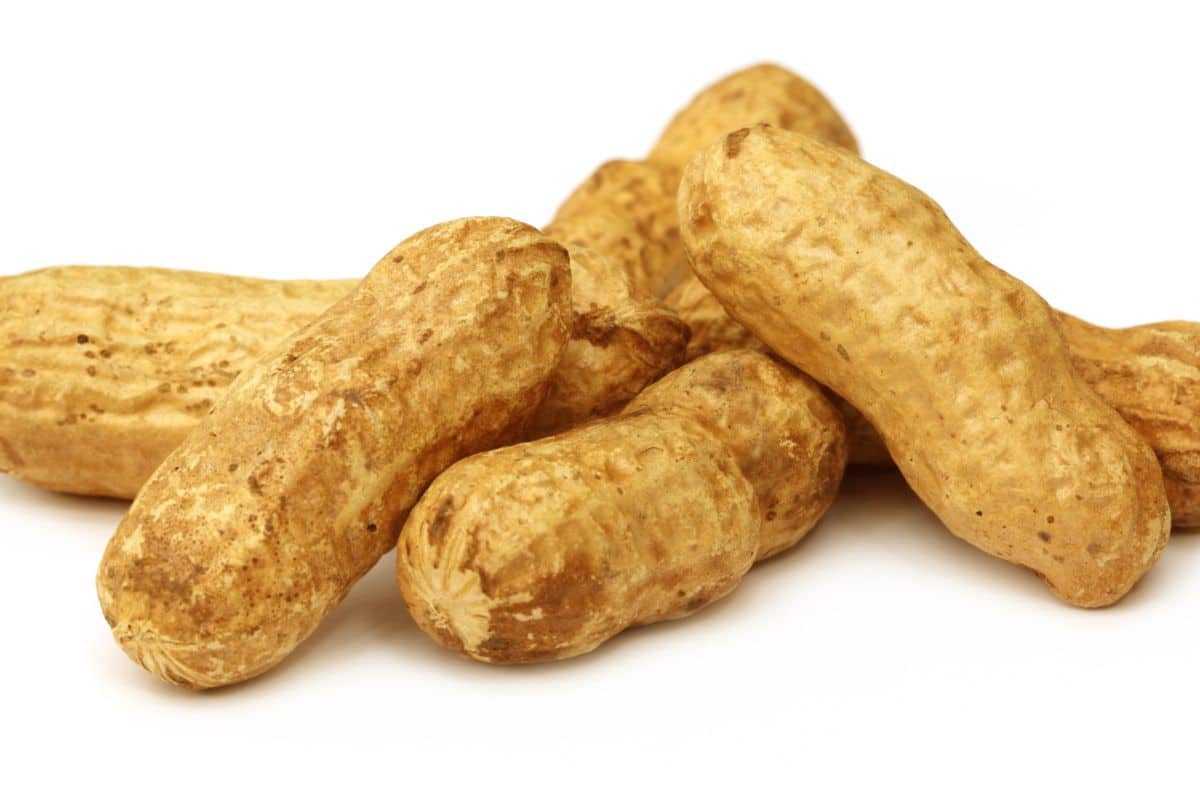
Virginia peanuts originated in the Southeastern United States, and are sometimes called Virginia jumbo peanuts or ballpark peanuts. Virginia peanuts are typically the largest of all types of peanut, and are often considered the creamiest peanuts.
Because of Virginia peanut’s large size and consistent color, they are mostly used as snacking peanuts. “Lesser” peanuts are generally relegated to making peanut butter, as that would be a waste of this ideal snacking peanut.
Water Caltrop
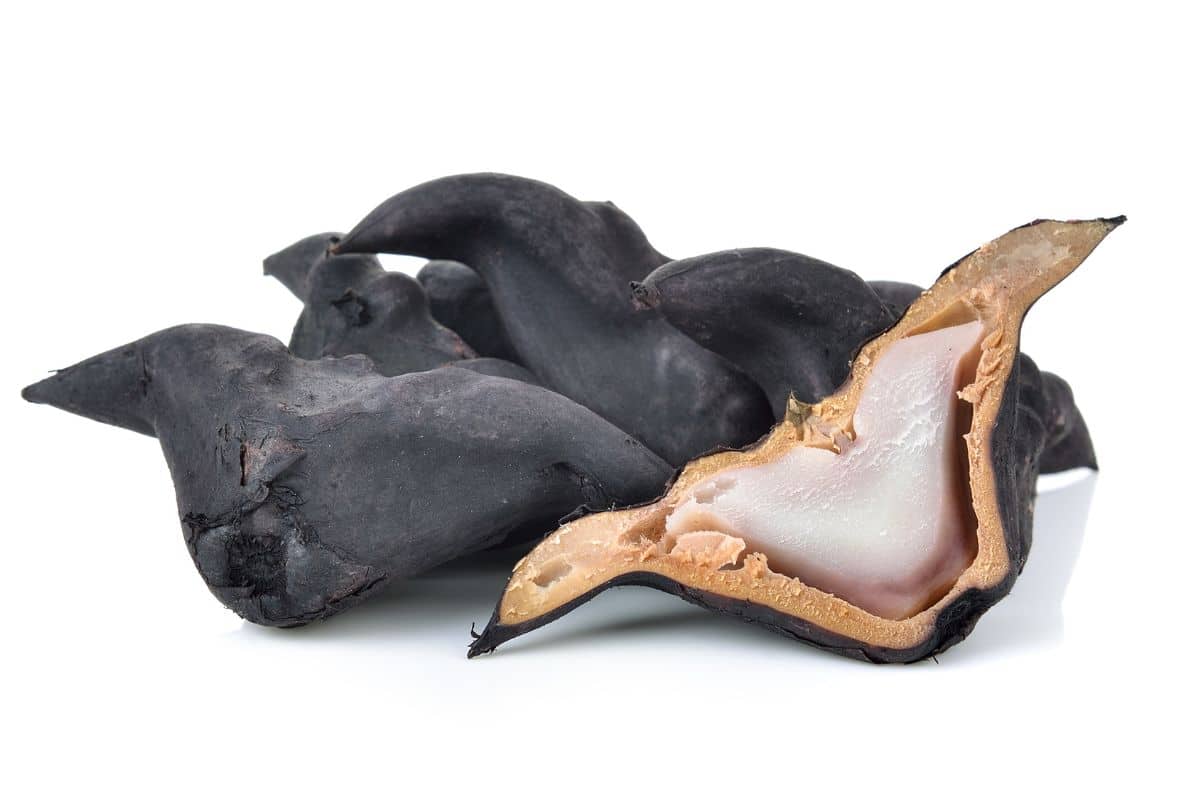
Water caltrop, also known as water chestnut, Jesuit nut, bull’s horn nut, or bat nut, is native to Southeast Asia. Water caltrops are small, aquatic nuts resembling black horns or chestnuts, and have a mild, nutty flavor.
Water caltrops are commonly used in Asian cuisine. They are often boiled or roasted and used in various dishes such as stir-fries, soups, and desserts. Water chestnuts are also popularly used in canned or fresh forms in Chinese dishes like stir-fries and spring rolls.
Nut Nutrition Information
Nuts are generally a great source of healthy fats, and a decent source of fiber and protein! The fat in most nuts is low in unhealthy saturated fats, and high in healthy monounsaturated and polyunsaturated fats. Most nuts are a high calorie food by weight though, so eat them in moderation.
According to Harvard Health, if you eat more than one or two handfuls (one handful = 1 ounce) of nuts per day, you risk adding too many extra calories to your diet and thus possible weight gain. They recommend nuts without added sugar, chocolate, or candy coating, and assert that if they are salted just be sure to not overeat them as this can make them high in sodium.
We hope you have found something among these 59 different kinds of nuts you can use, and as always happy cooking!
Trivia Answer
Baldness. Oh, if only it was as simple to cure as eating a few hazelnuts!














What type of nuts are round shell white with greeen stripes ??
I’m not sure, I haven’t seen one like that! Pistachios come to mind?
Hi. Your picture of oysternuts seems to be not a picture of oysternuts at all. Completely different. Do a search on Google and you’ll see
Thanks for pointing that out, Chris!
I am curious to know what kind of nut/seed is shown on the site Before its News which seems to be an homopathic remedy for skin infections.
I cannot paste a copy of the nut(?) for your identification and would like to know if such a nut is used for the purpose the site illustrates.
Thank you
Trees in my area have very dark shiny shells that are much darker than the pictures I have seen of hazelnuts. Are these hazelnuts? Are they edible?
That’s a tough one, Marsha! I’m honestly not sure!